
This is the final shipment of lumber (I hope) for the Rock Creek trestle. Next I need to stain it and get building! Onward!

This is the final shipment of lumber (I hope) for the Rock Creek trestle. Next I need to stain it and get building! Onward!
After another marathon weekend of working on the layout, I’ve made some great progress. Nearly all of the tracks in Bethesda are in. All of the drops are wired and nearly all of the turnouts have Blue Point manual switch machines installed. I cleaned off the table to get a look at the overall layout:
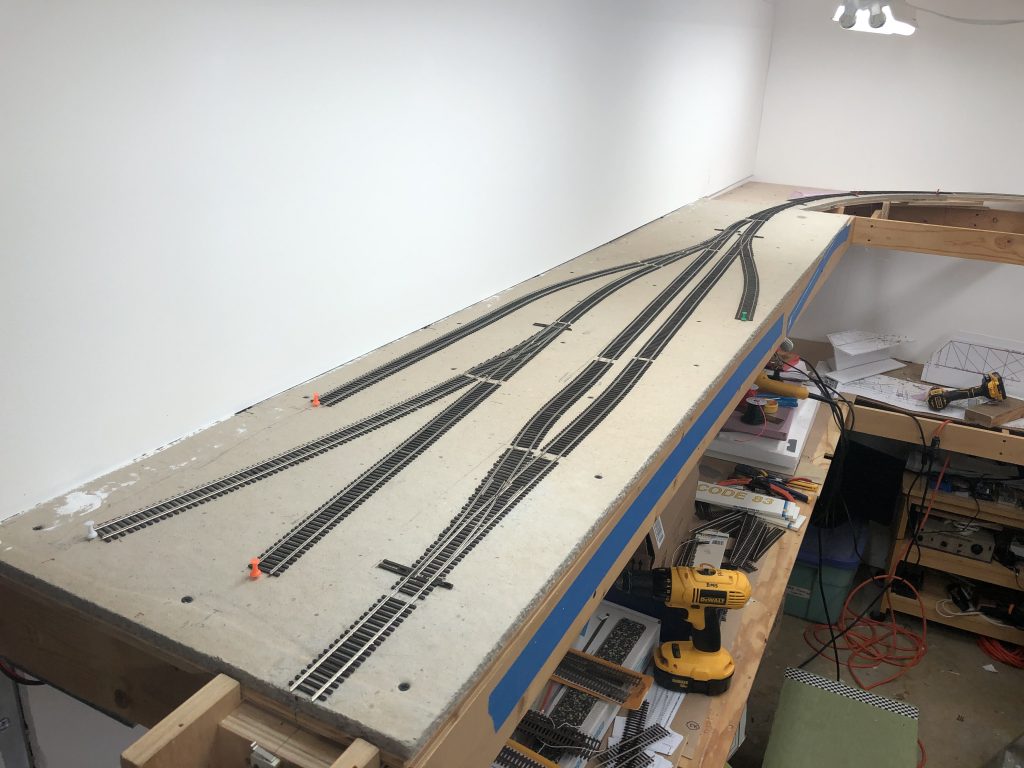
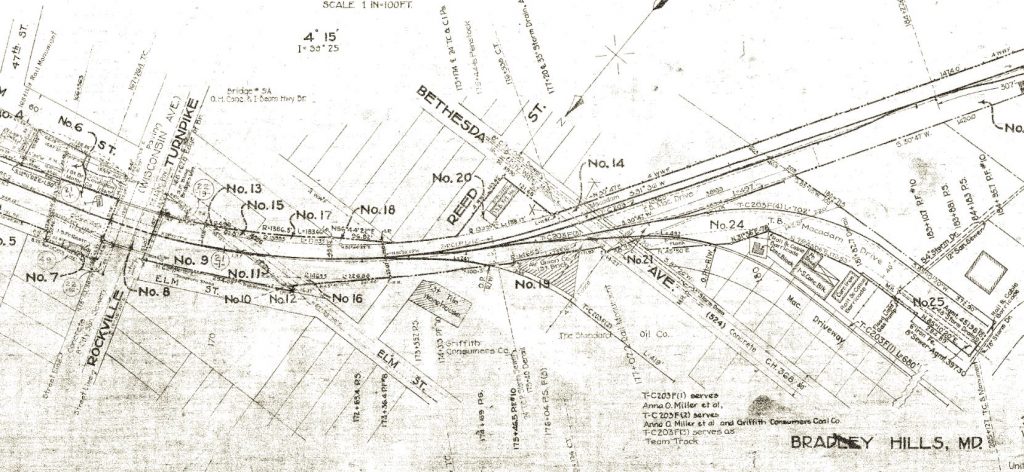
I couldn’t resist doing a bit of operating. Man, this felt good!

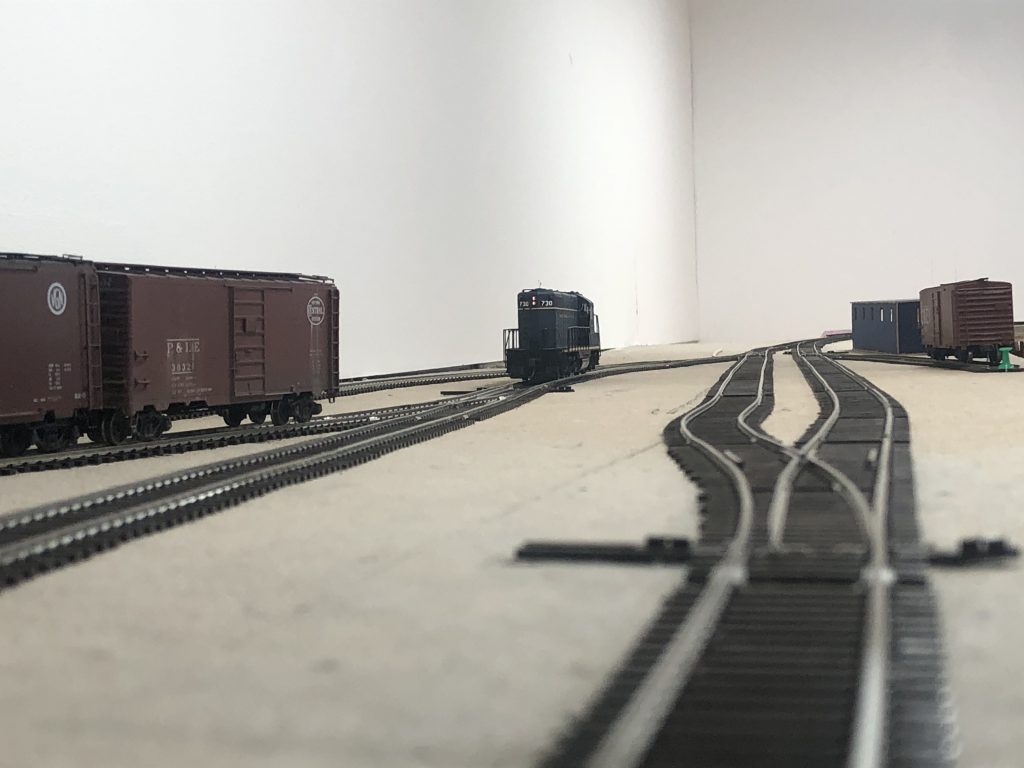
One thing that has really struck me is that over the span of eight years working on this project I have accumulated a lot of stuff to put this layout together. Much of it is piled beneath and around the layout itself. As I work, stuff gets shifted around. I’m at a point now where I have pushed myself out of my comfort zone to try new things. Some of these things include simple things like soldering feeders to the bottom of the rails instead of the sides up to more complex things like hand-building complex curved turnouts. I couldn’t do this without help and encouragement from friends and family who push me forward and answer all my stupid questions.
Lately I’ve been learning how to install turnout machines. I mentioned above that I used Blue Point switch machines in Bethesda. This decision was primarily based on the fact that I owned five already (that I had in a box of turnout stuff) and I realized a fascia would be nigh impossible with the way this section of the upper deck of my layout is built. There is no real room above or below it for toggle switches, I don’t want to cut big holes in the benchwork, and I don’t want to protrude out. Solution? Blue Point turnout machines. They use a push-pull rod/handle and can sit right on the fascia with minimal intrusion. Perfect. I’m quite happy with how they have been working for me. Bonus, I can wire the turnout frogs right to the machine.
Another project that has been in the hopper for a while are eight Iowa Scaled Engineering MRServo-1 units I purchased a couple years ago. (unfortunately, this product has been discontinued!) These nifty little things use a board that controls a micro servo mounted to a 3D printed chassis. Wiring up a DPDT switch and attaching to a power bus gives you a nifty little slow-mo turnout controller. They have a few different bases including a slim profile one to allow for remote installation in tight spaces. The MRServo units came in three types with additional features. This is the most basic of the three, featuring only turnout motor control. For now, it’s all I need. I plan on adding a Frog Juicer eventually to handle the frogs. These MRServo-1 units will be used on the upper deck from Chevy Chase all the way up to Georgetown Junction, as there is ample space below the track to install a fascia with toggle switches.
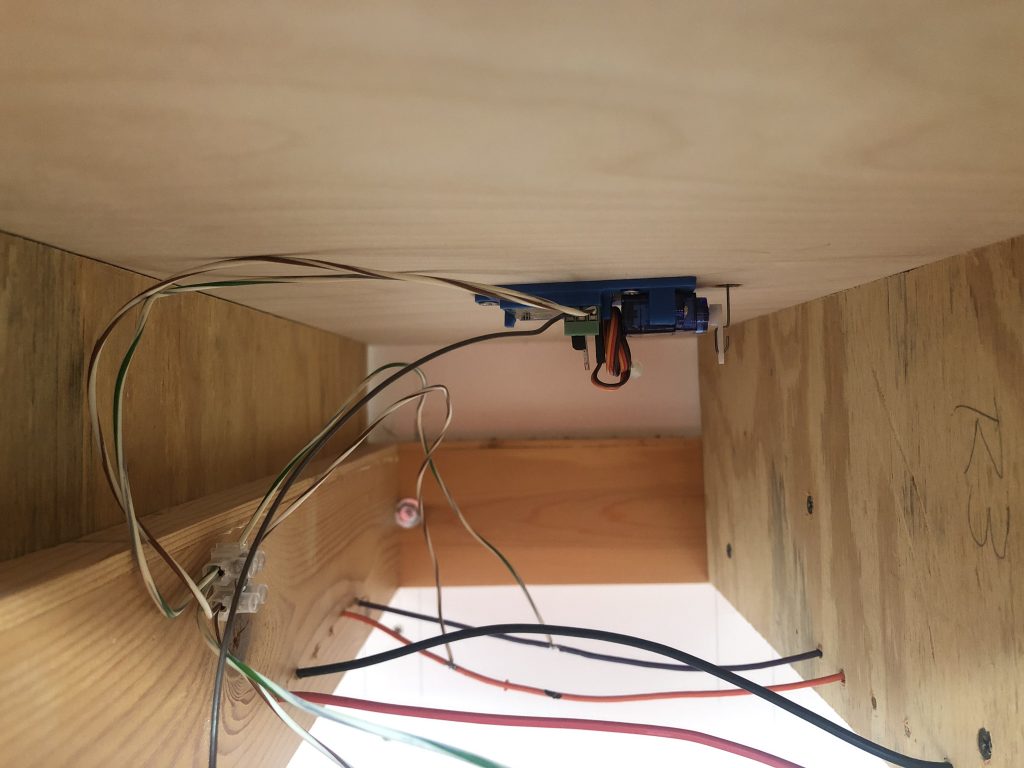
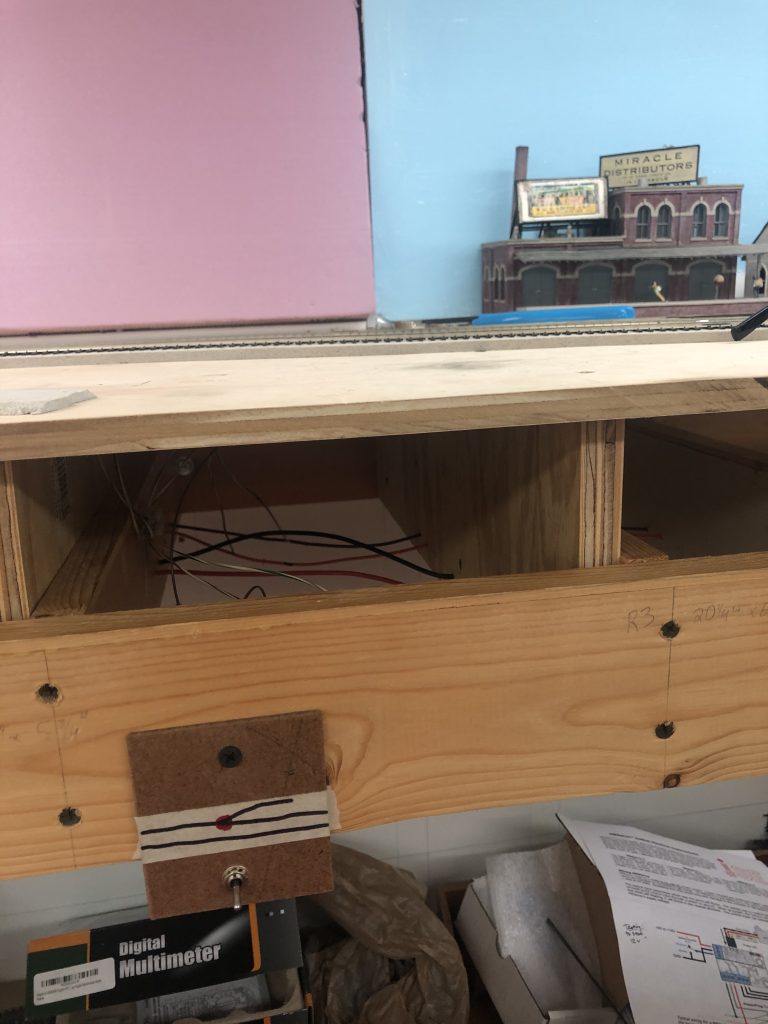
I am progressing my way through projects that have loomed over me for years. It feels great to burst through and make real progress on this layout and I’m learning so much along the way. I ran a train all the way from one end to the other with no issues whatsoever. Like so many things, when you break a project into smaller pieces it takes away some of the mystical difficulty, making it a bit more manageable. I have been crushing these small hurdles left and right. I am hoping to have a video in the next few weeks showing off the progress.
And then, once the upper deck is done… it’s on to the lower deck! Woah!! But first, I gotta do something about all that JUNK! (ha)
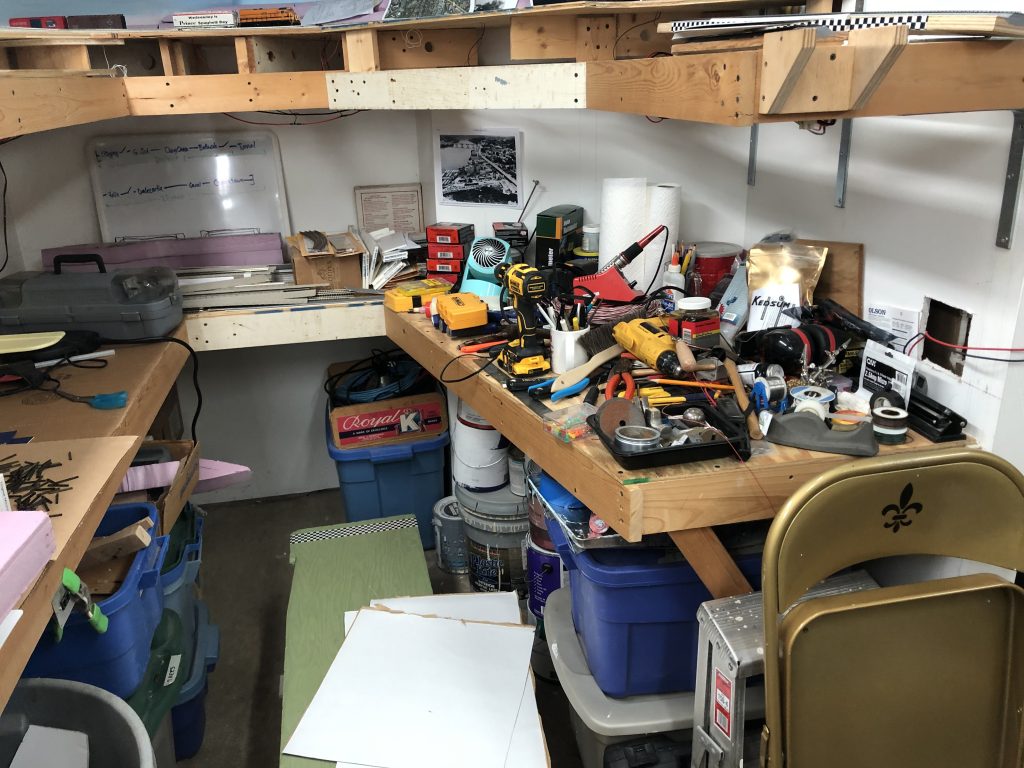
It has been a busy last week of working on the layout. Last weekend I spent much of the time getting the three curved turnouts that lead into Bethesda in place and working properly. This involved quite a bit of work; test fitting, cutting ties, staining them, painting the turnouts, installing tie templates, installing ties, sanding, laying in the turnouts, fitting them, cutting them to length, attaching feeders and drilling holes for them along with holes for the switch machines. Once in place, lots of sighting and adjusting was done with the tracks in Bethesda before spiking things down and testing some cars on the track. A bit of filing here and there and we are in business.
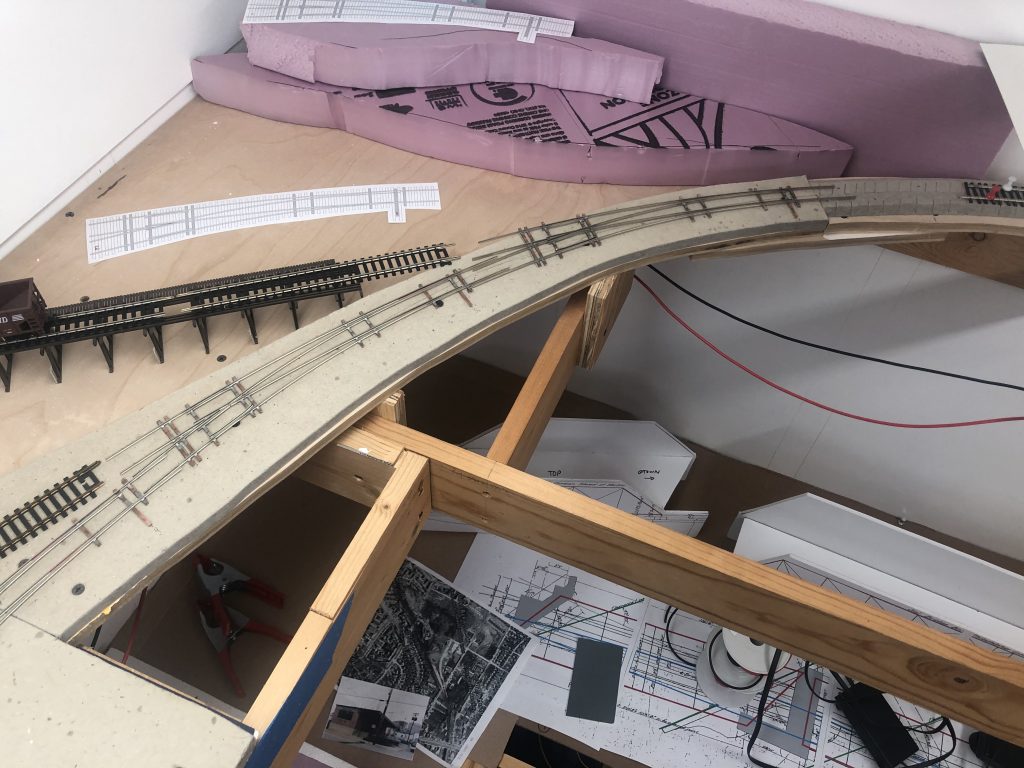
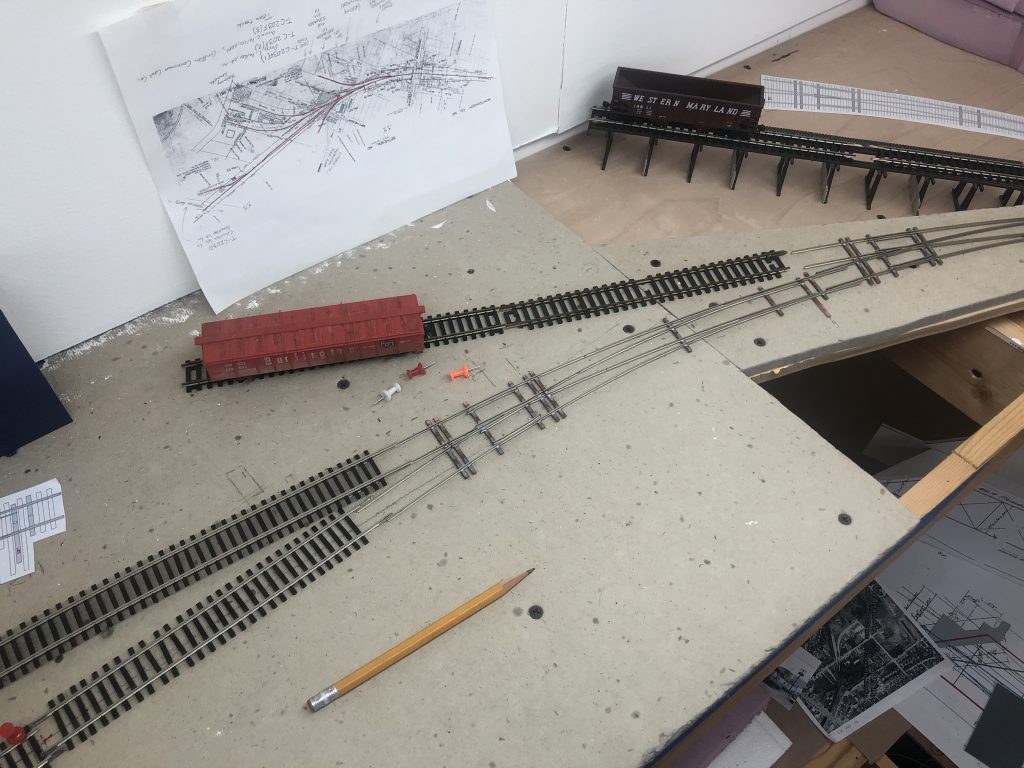
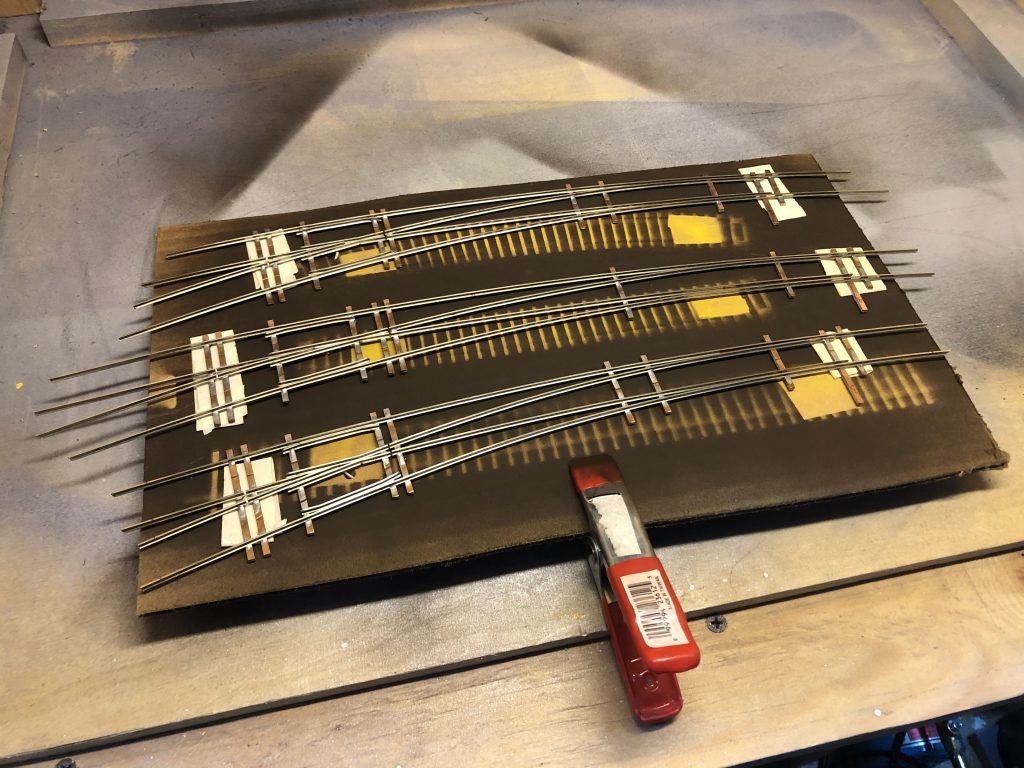
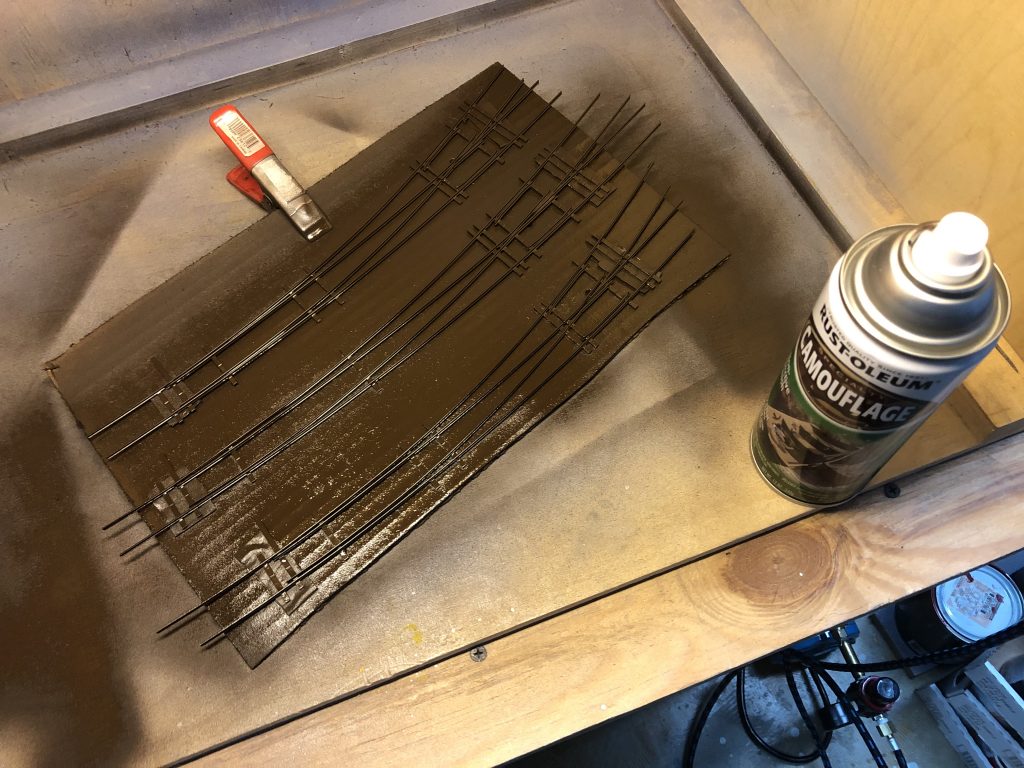
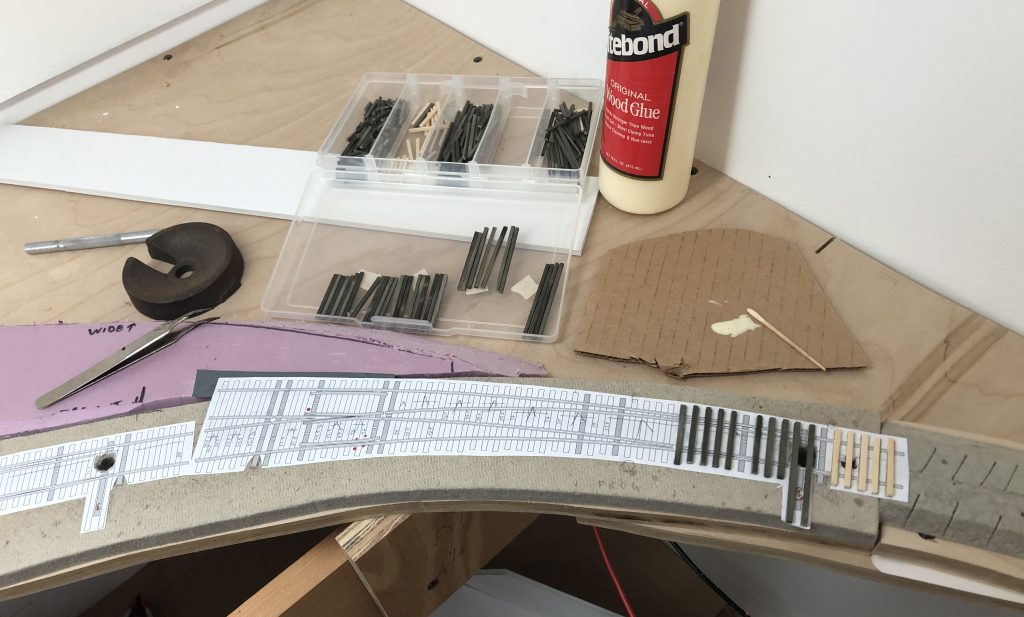
The three turnouts are sized as follows from top to bottom: #8 50″ outside radius, 35″ inside radius, #8 60″/40″, and #10 60″/46″.
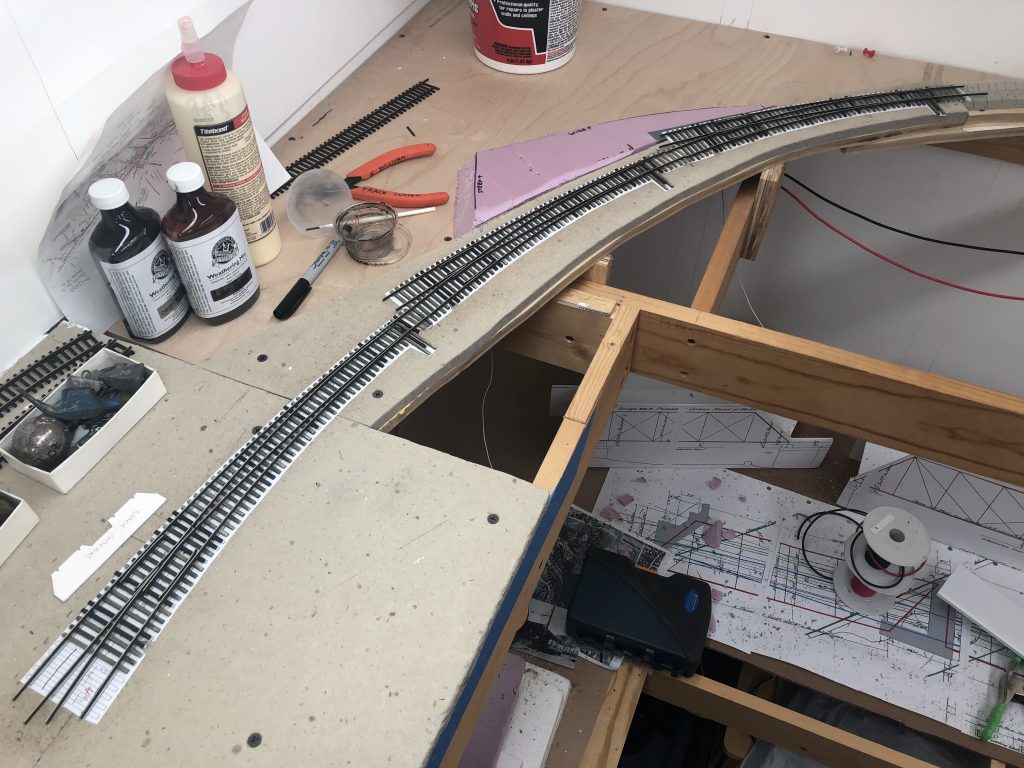

Some folks have asked me how I do feeder wires, so here is a quick illustration. A good friend, Matt R., convinced me to solder feeder wires to the bottom of the rails instead of the sides. This method leaves a clean look with no unsightly wires poking out, globbed onto the rails. It does take a bit of extra work, but once you get into a rhythm it goes fast. Here is my setup:
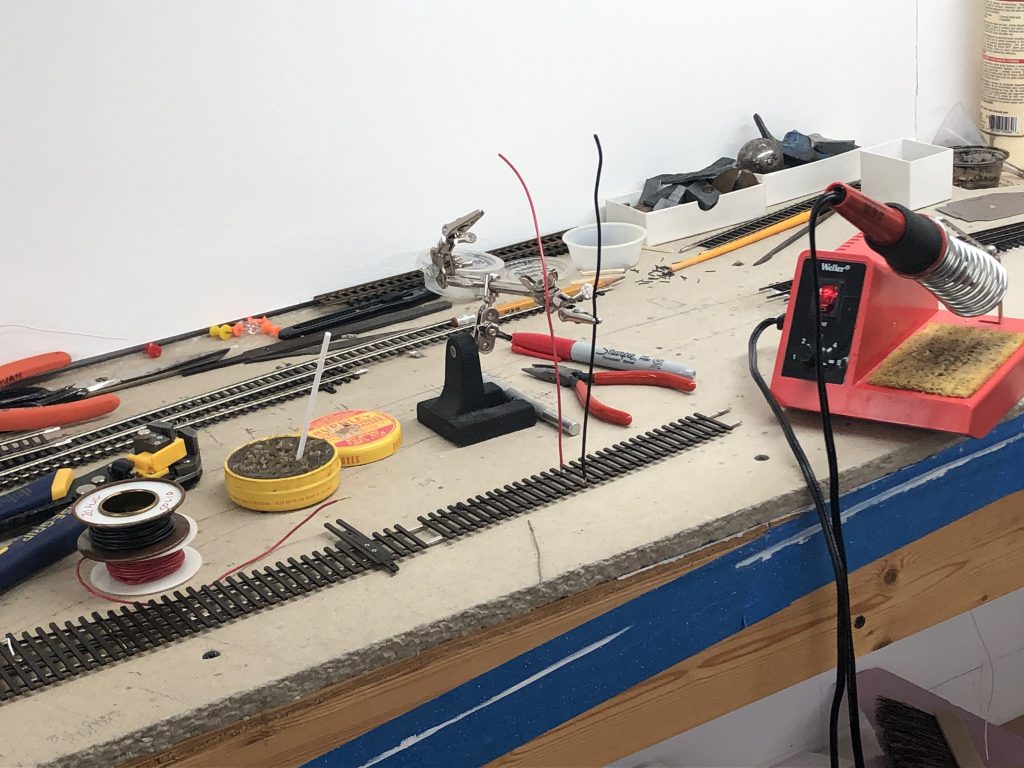
I will typically mark the locations on the roadbed where I want the feeders to drop. This is done by marking each side of the rail and then the tops of the rail. Remove the piece of rail and drill a hole for each feeder. Flip the rail over. With the X-Acto, snip the small plastic spacers between the ties where you will solder the feeder. Strip about 1/8″ of insulation from the end of a feeder and bend it 90°. Using a micro-applicator, put a tiny bit of flux on the wire and the bottom of the rails. Straighten the wire and clip it in the helping-hands, positioning it so that the bare end is just barely pressed onto the rail. Now, using your soldering iron, place a tiny bit of solder onto the end of it. Then, press the iron and your solder into the joint and release after it flows onto the rail itself. This should only take a few seconds, most. You don’t want to melt the ties!
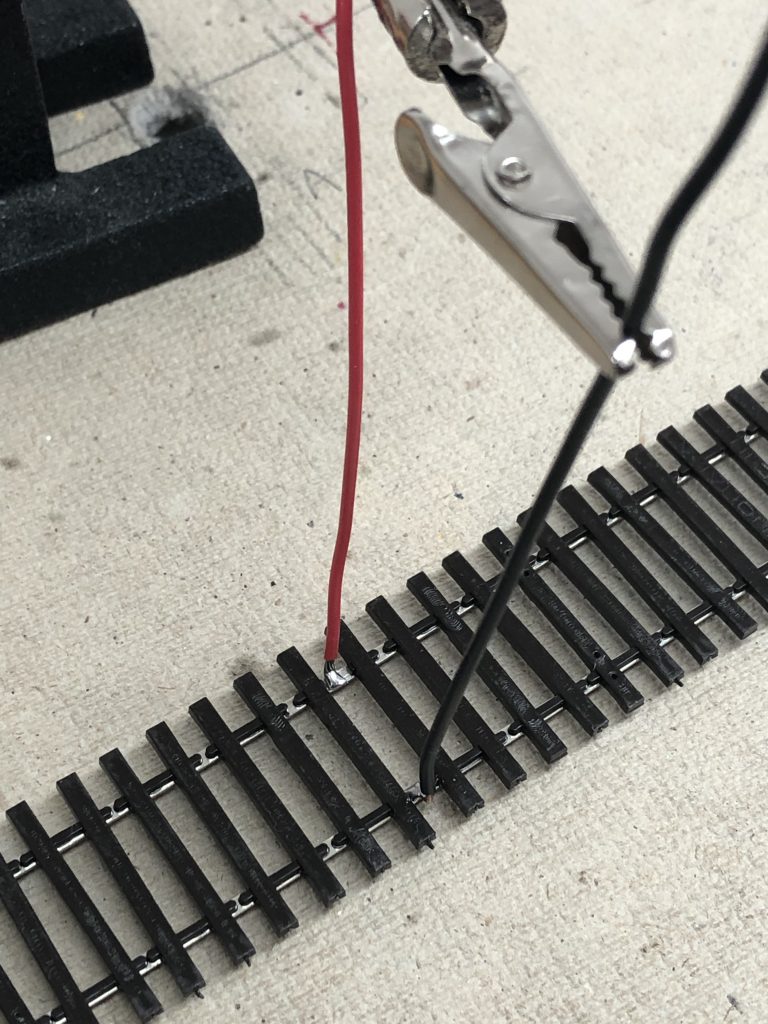
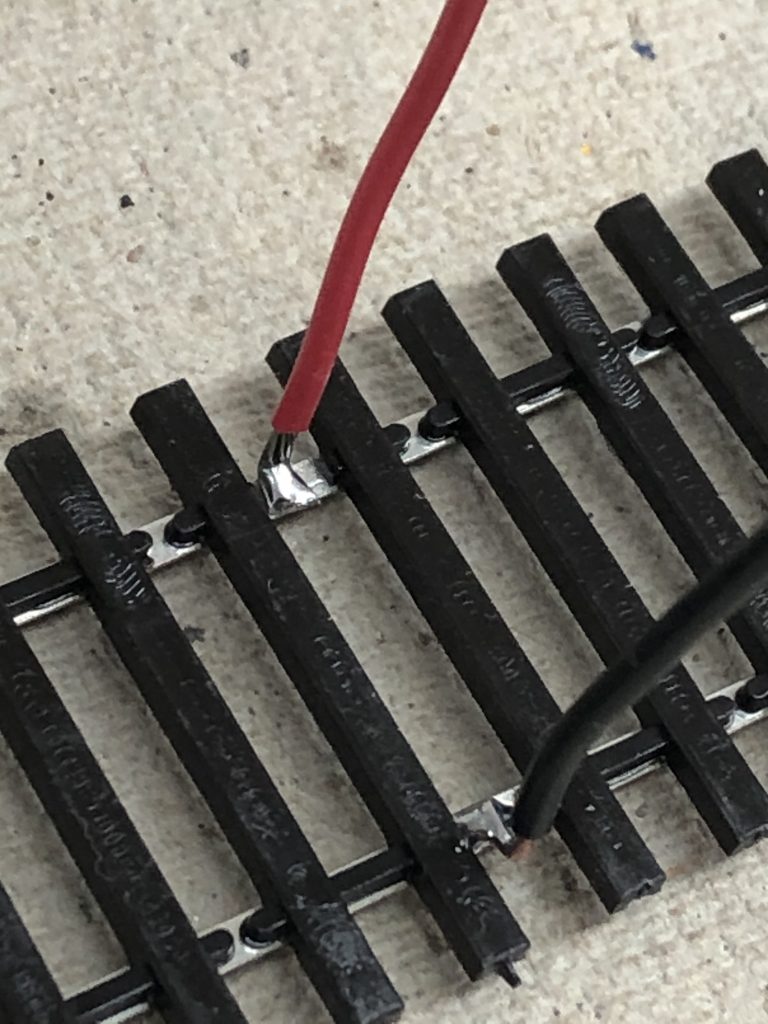
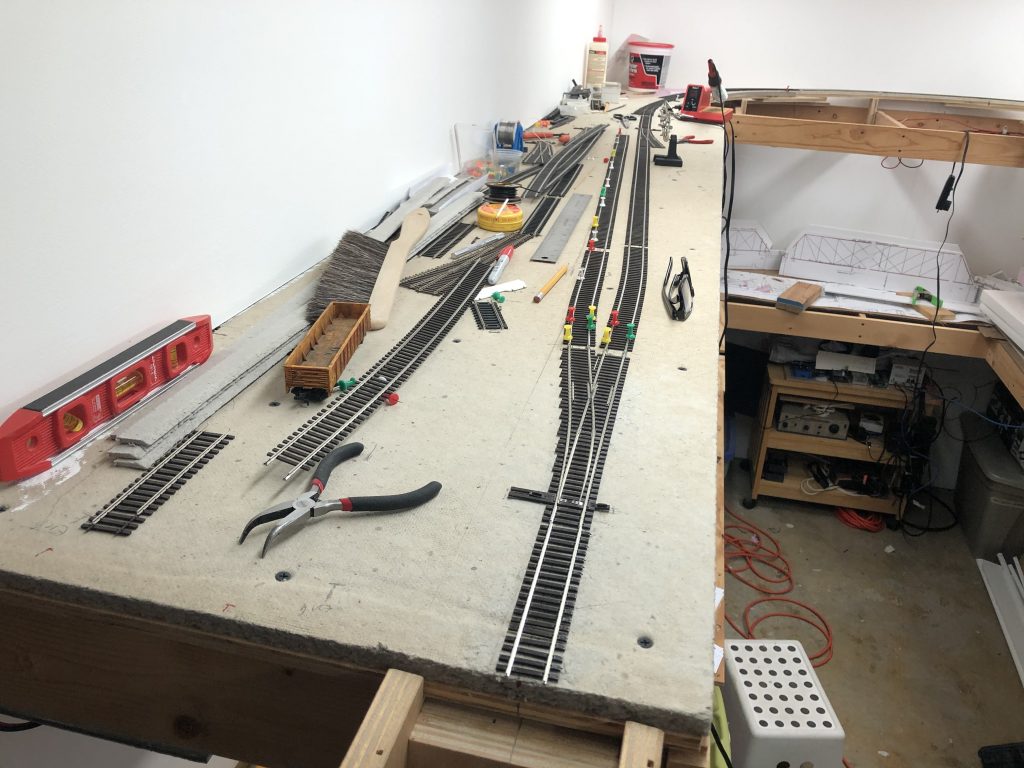
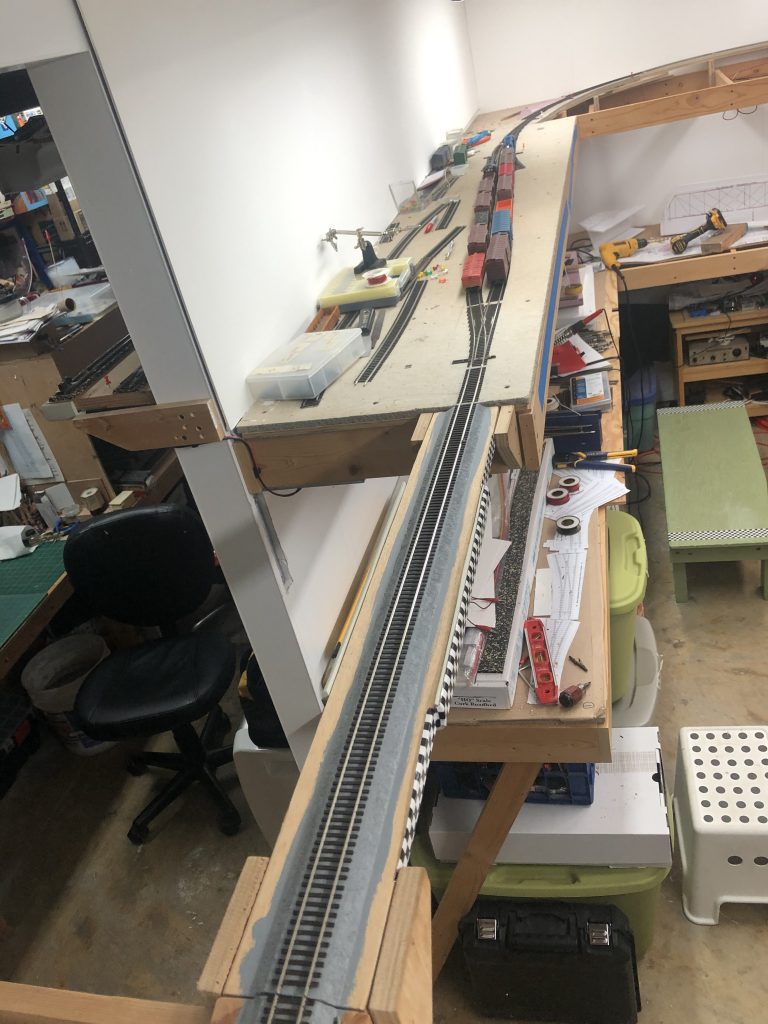
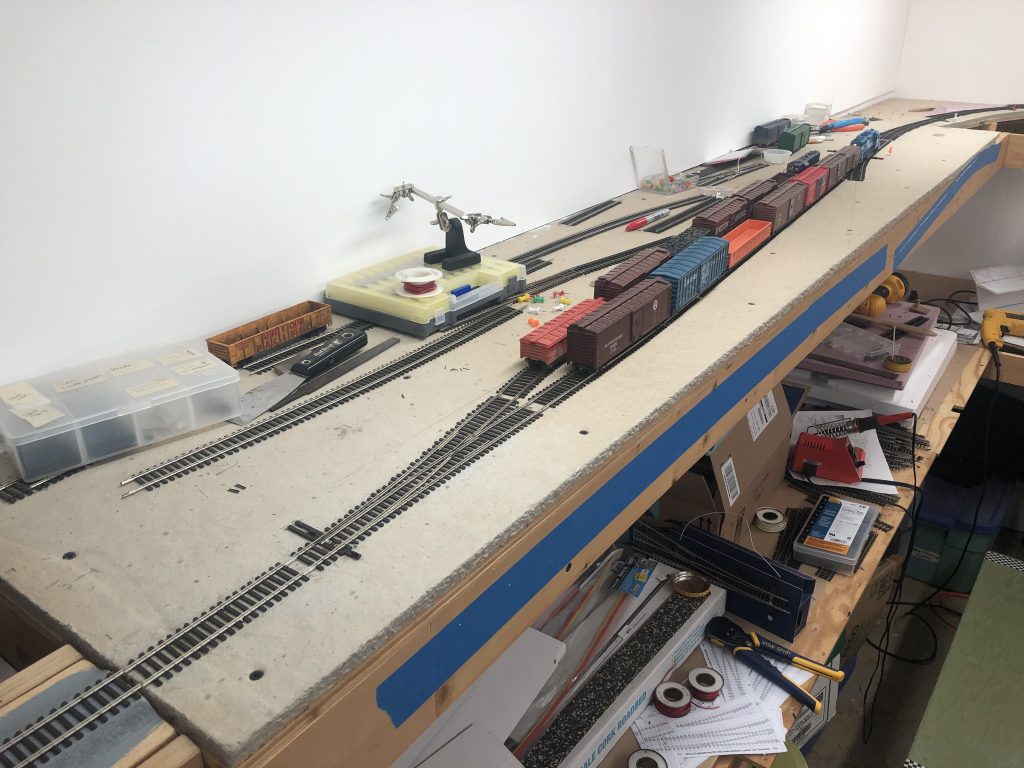
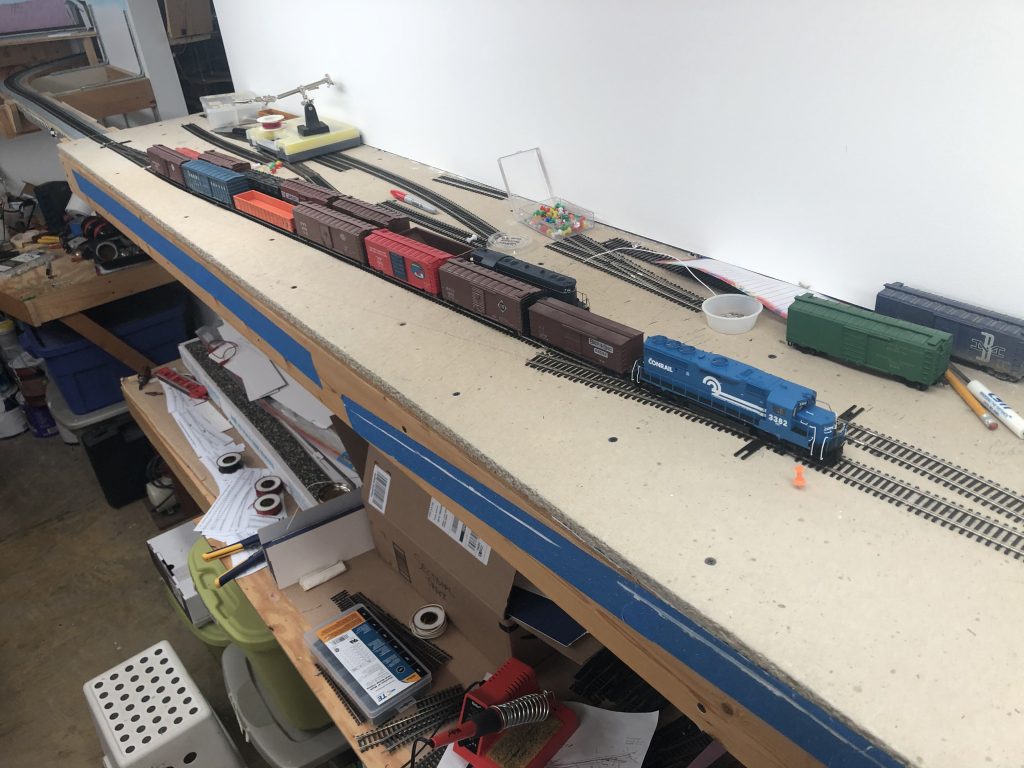
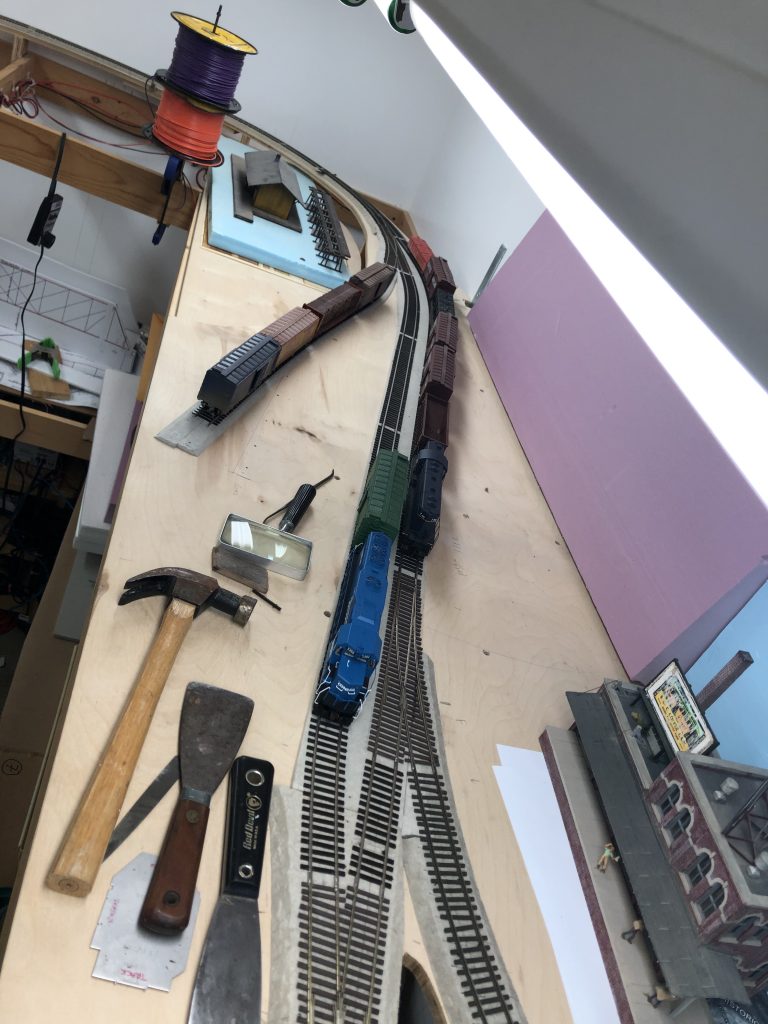
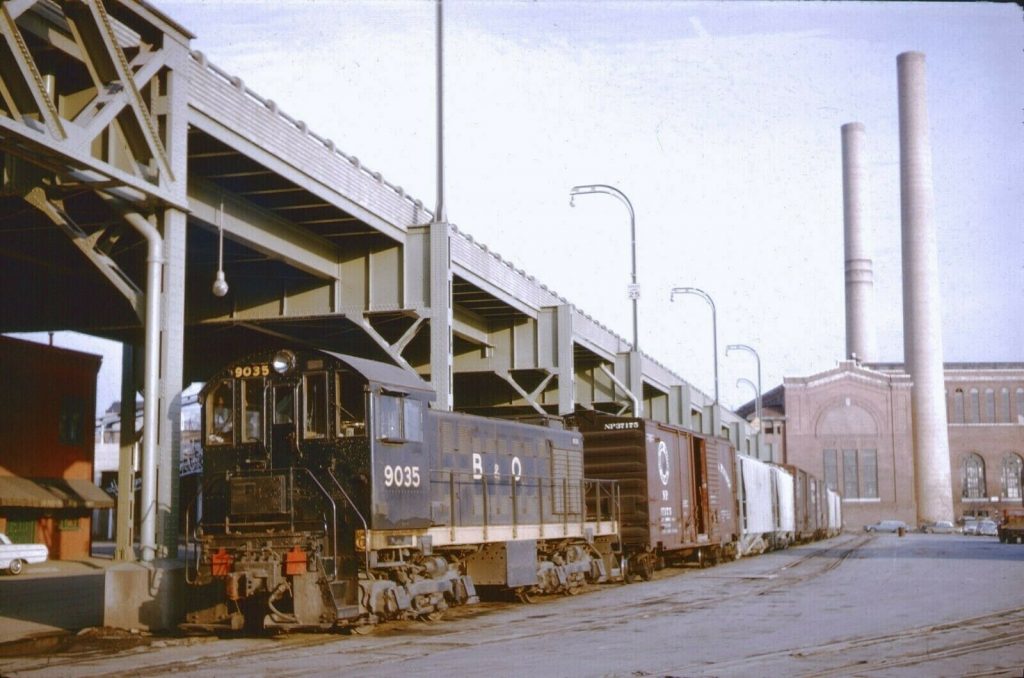
Long-time readers may recognize this train, as it’s been posted before. After some last-minute, heart-pounding eBay action, I am now the proud owner of a slide showing another view of the same train stationed in Georgetown in the winter of 1965. Decent views of trains on the Georgetown Branch are so rare, I will leap at any opportunity to own a small piece of this history. Unfortunately the photographer is unknown. B&O 9035 was an Alco S-2, built between 1943-1948. Three years later the Capitol Traction Co. power plant would be razed. Here is the matching photo:
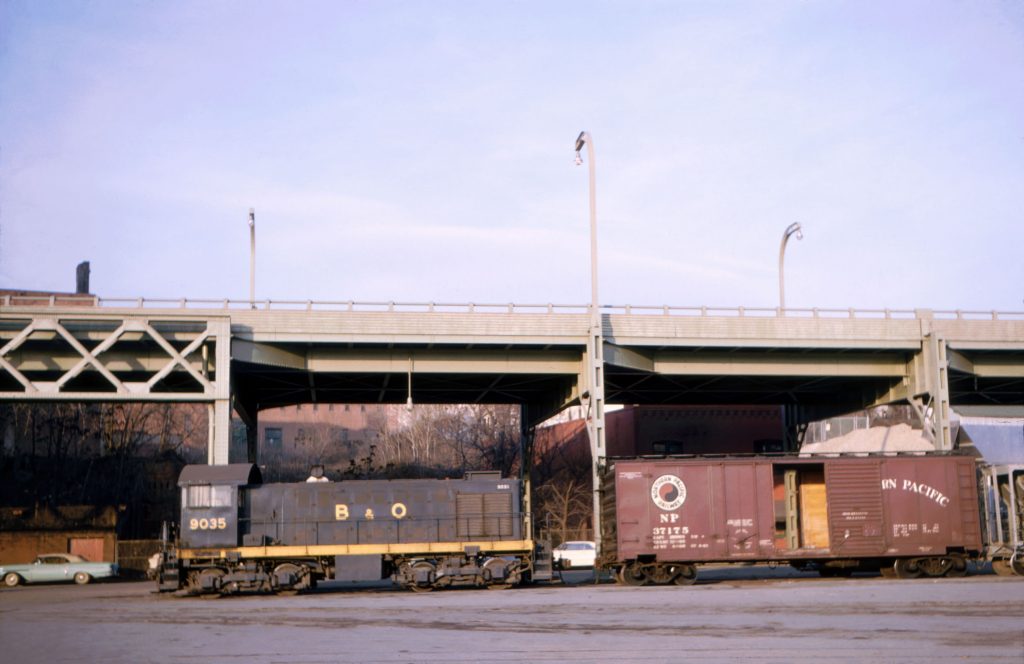
An astute viewer on YouTube, Bill D, clued me in to a film starring Kevin Costner called No Way Out which was partially shot in Washington, DC on and under the iconic Whitehurst Freeway. Now, as we all know, the Georgetown Branch had seen its last train in the summer of 1985 so being that this film was filmed in the summer of 1986, it was only a year later and the line still hadn’t been officially abandoned.
EDIT: BUMMER – the film clip has been removed from YouTube, probably for Copyright. Oh well. If you do catch this thriller, you’ll get a glimpse of the Whitehurst just after GB abandonment.
A few fun notes: the Whitehurst is seen in its original configuration, as-built. A few years later, in 1993, the freeway would be rebuilt topside, adding reinforcements and additional safety enhancements. The large brick plant that is seen when Costner jumps from the Freeway is the old DC Incinerator which is now the Ritz-Carlton. (you can eat dinner inside the chimney!) I got a real laugh when Costner runs along the C&O Canal and then heads into the Georgetown Mall, which is disguised as the “Georgetown” Metro station. Also, they obviously couldn’t get permission to film in Metro, as they used some non-DC subway cars. Nice find!
Here is a link to the latest version of the plans I created for my model of the Rock Creek Trestle. I spent tens of hours over a few days refining the last version. This new version was carefully corrected (there were many small errors) and updated to include a new girder height and lots more hardware and correct lumber sizes. I also developed a side view, which took tremendous effort, as the photos just do not exist.
Remember that these are not perfect; since there is so little information available about the trestle in the era I am interested in (early 1940s) I had to use educated guesses and the few reference photos and drawings I have to make the best attempt. The plans were drawn in Adobe Illustrator. Each of the first 20 pages is a separate bent. The last few pages show a side view. I am gearing up to begin building the model and will share my progress as it is made. Comments and questions are welcome!
EDIT May 22, 2020: I have updated the plans once more: File is now available on Dropbox.
Back in 2017 Matt R. and I took a trip to the B&O RR Historical Society Archives in their wonderful new home in Eldersburg, MD. I used to frequent the Archives about 15 years ago when I was really getting into researching the Branch, but once my kids were born, things changed and I was unable to make time to get out there. Matt wanted to check it out, so we hoofed it out there to check it out.
We were rewarded with some awesome finds. Me, well I snapped a bunch of photos for reference and wanted to share them now, since my intentions to write articles and updates for the blog never really materialized nearly two and a half years later. So here they are:
Some of the highlights include plans for the original freight house in Georgetown (ca 1910), track arrangement in the “old yard” ca 1940, some modern Rock Creek trestle drawings and the best finds of all, some dispatcher sheets showing train movements in 1959. Now, if only I could find some waybills and rosters! Enjoy!
OK FOLKS, here is Part deux of my update on what’s new in with my model RR progress, and more! Who else is finding lots of spare time to work on your layout and hobbies?
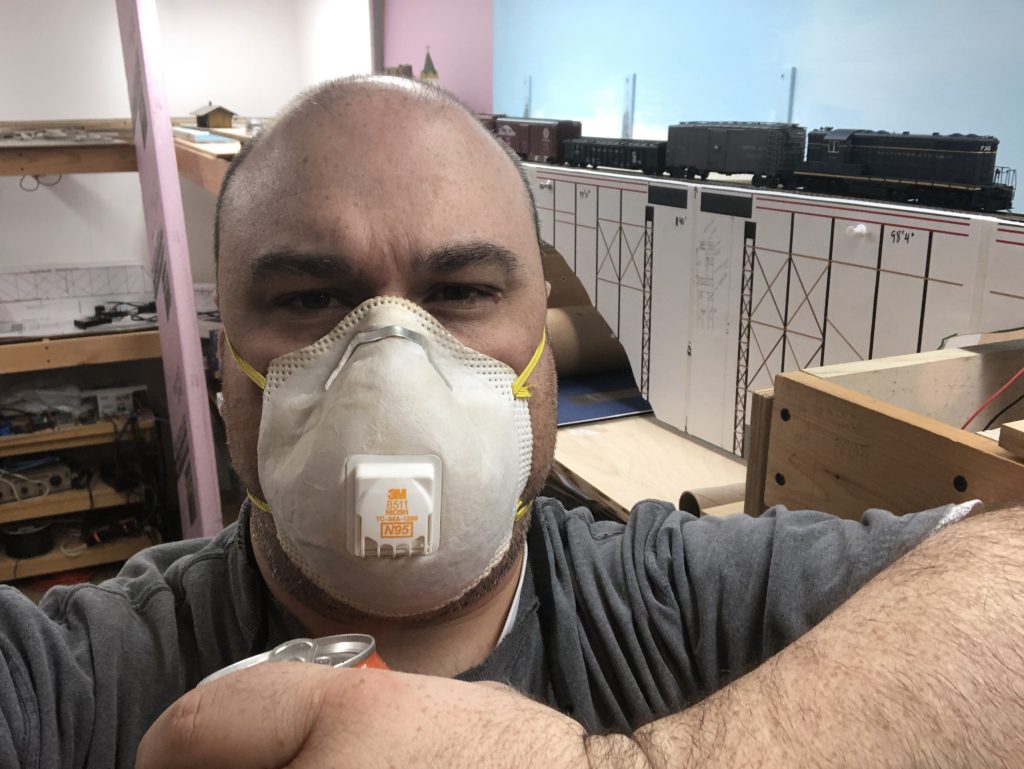
I scaled and printed some blueprints of the three bridges across the C&O Canal on the Georgetown Branch. These were printed and had been laying around for the last couple years. I finally got some time and made mock ups using foam core and 3M spray adhesive. The goal is to get as prototypically accurate as possible when recreating the bridges, but I know some selective compression will be necessary, as I simply do not have the space. I have already done a virtual mock-up, and in the near future I hope to do a physical one.
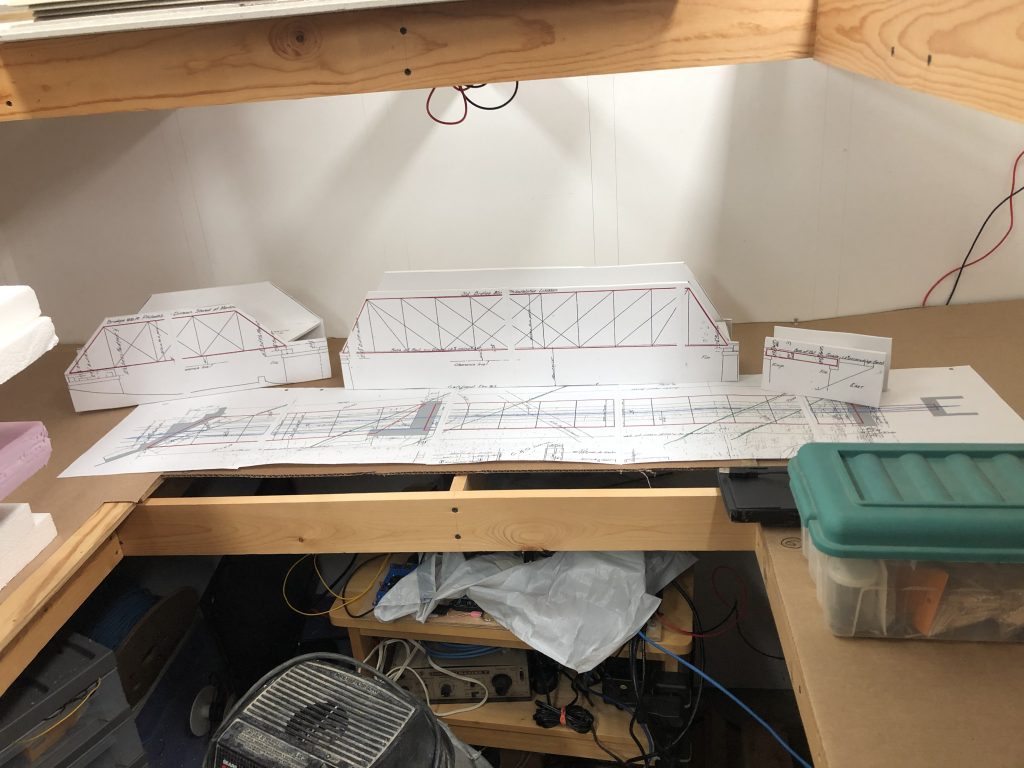
Bethesda Update
A lot going on in this area of the layout as I completed the backdrop, painted it and removed tracks to do mock-ups.
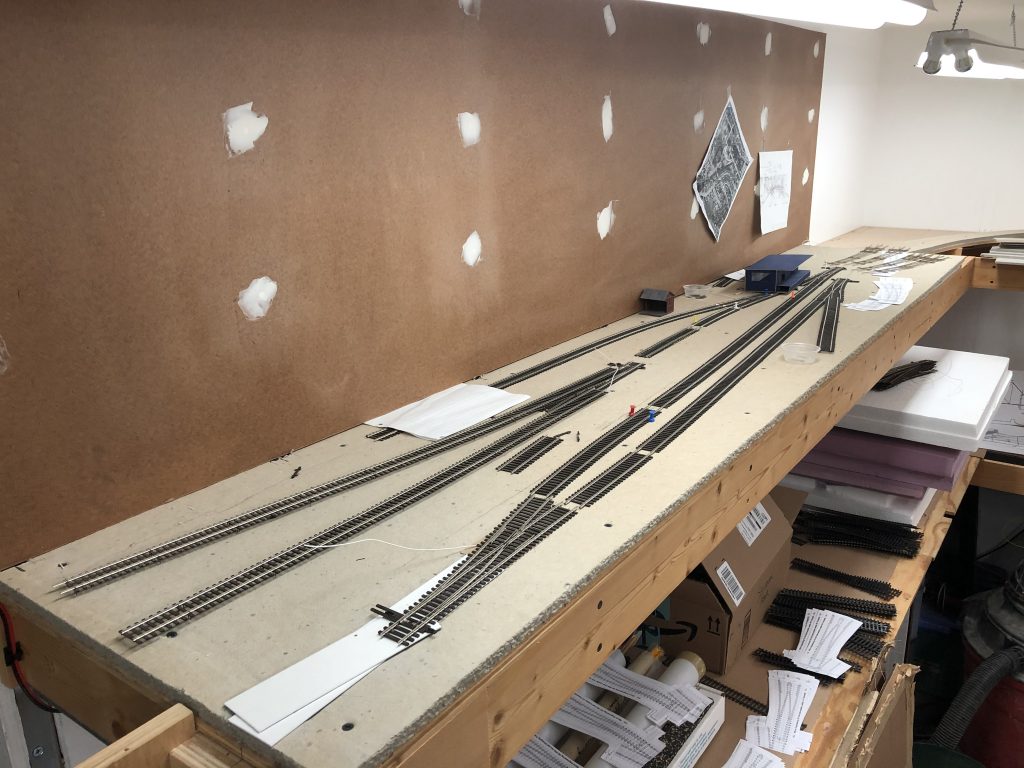

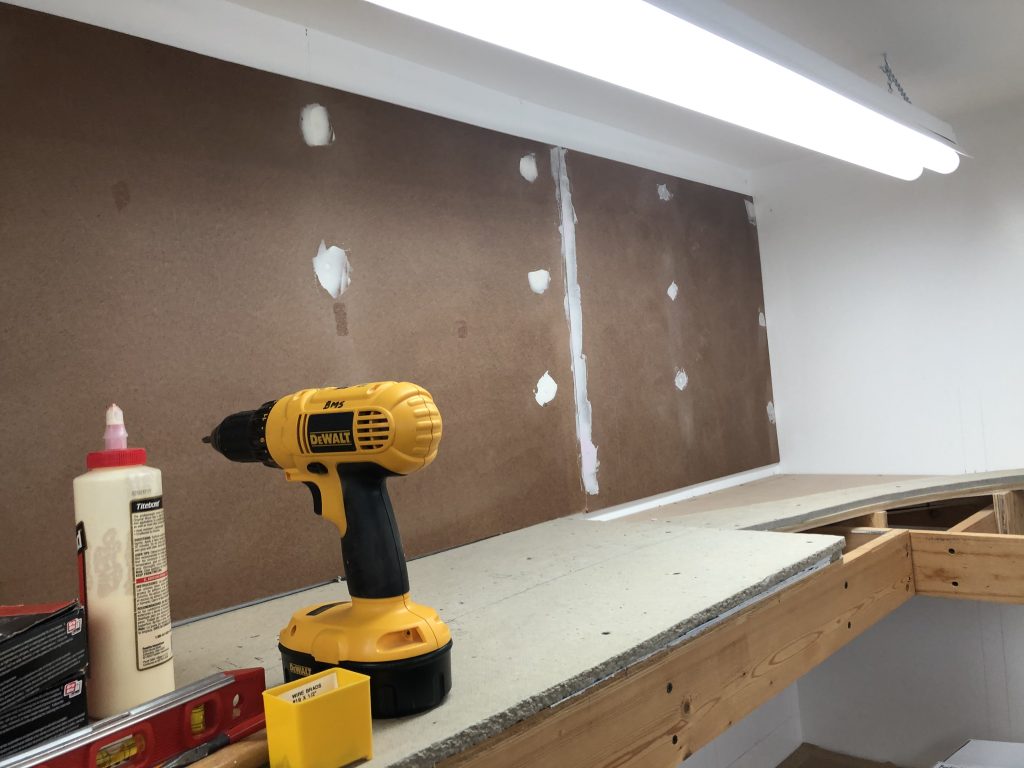
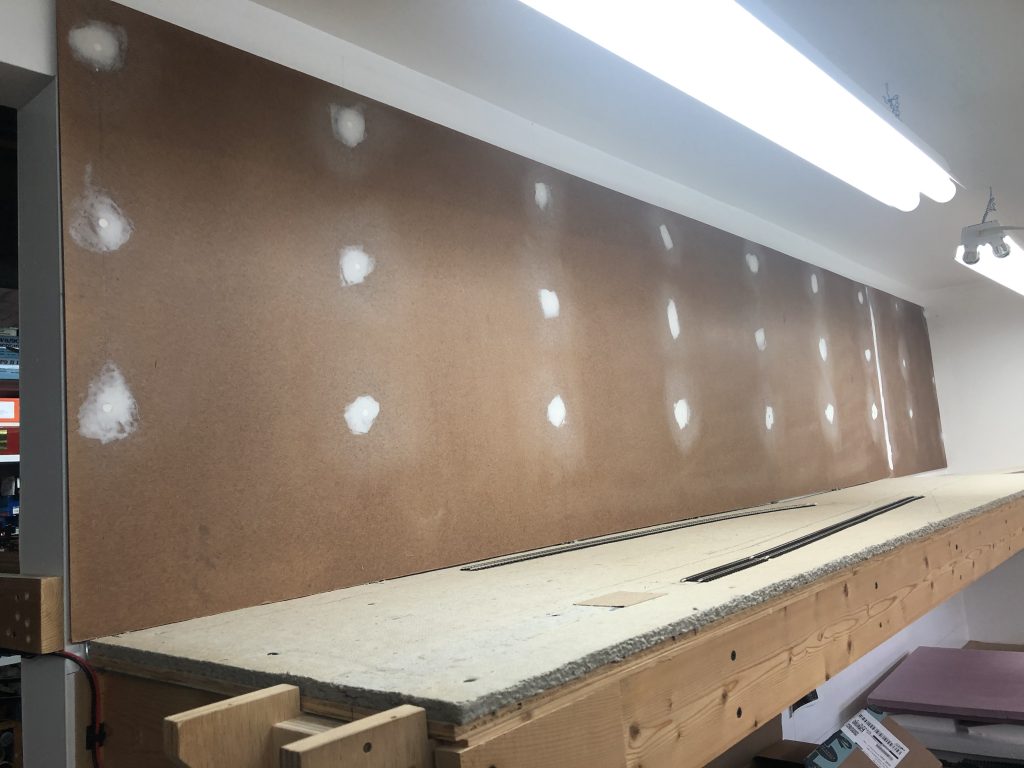
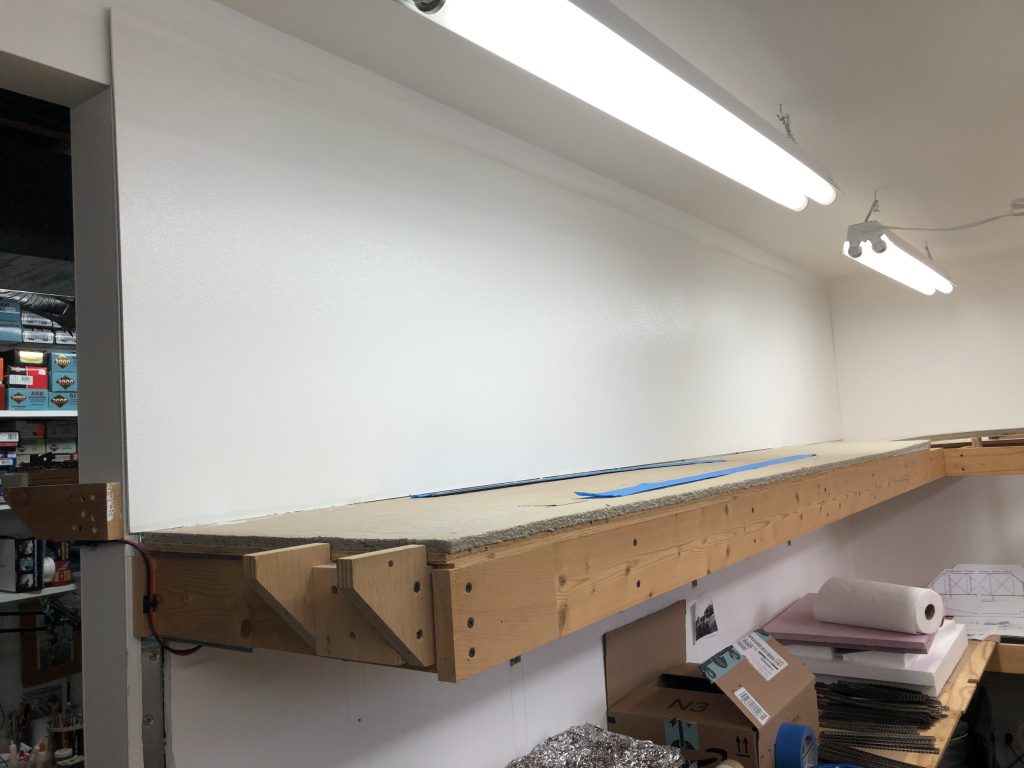

The three turnouts are sized as follows from right to left: #8 40″ outside radius, 30″ inside radius, #8 50″/35″, #8 60″/40″, and #10 60″/46″.
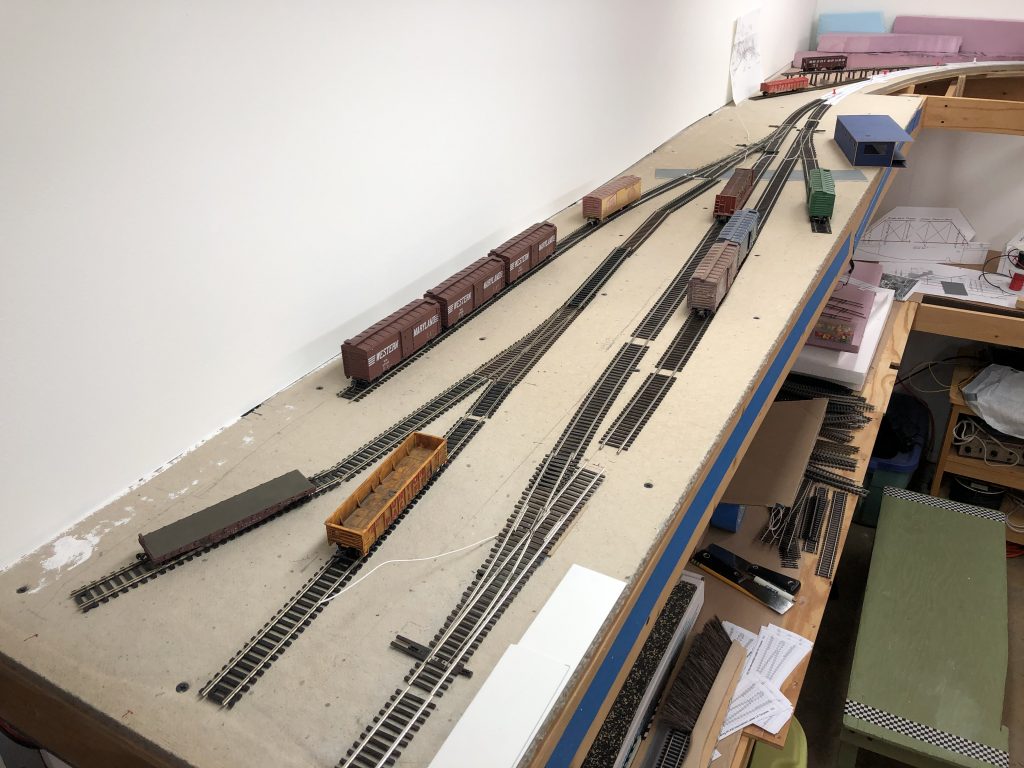
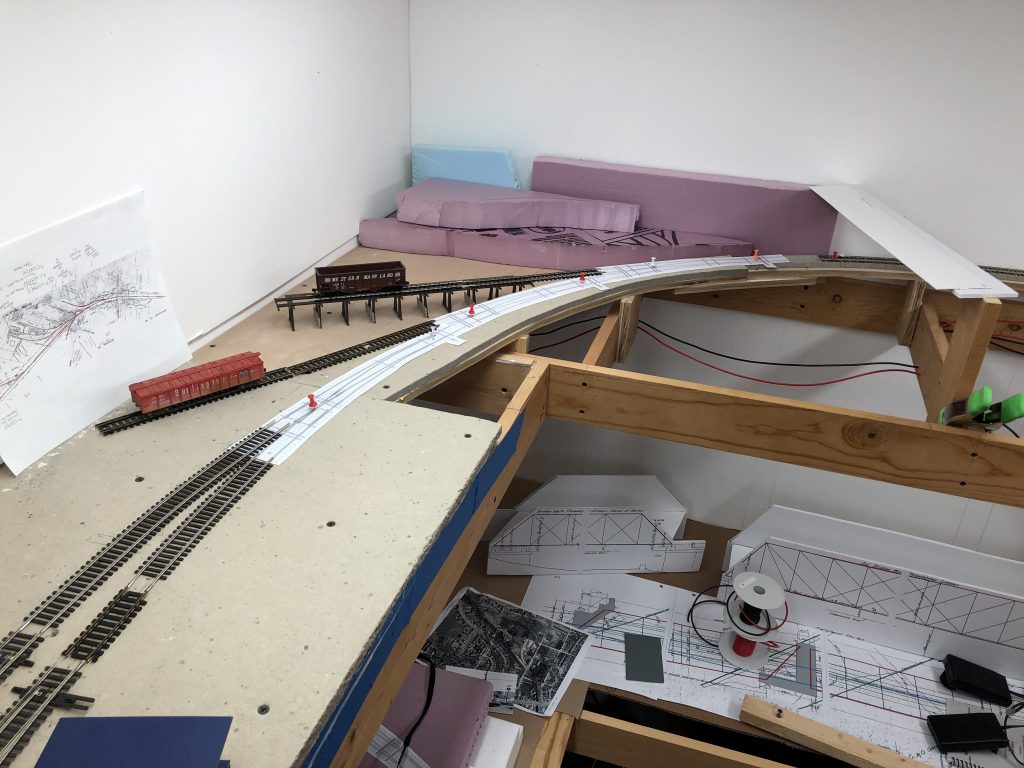
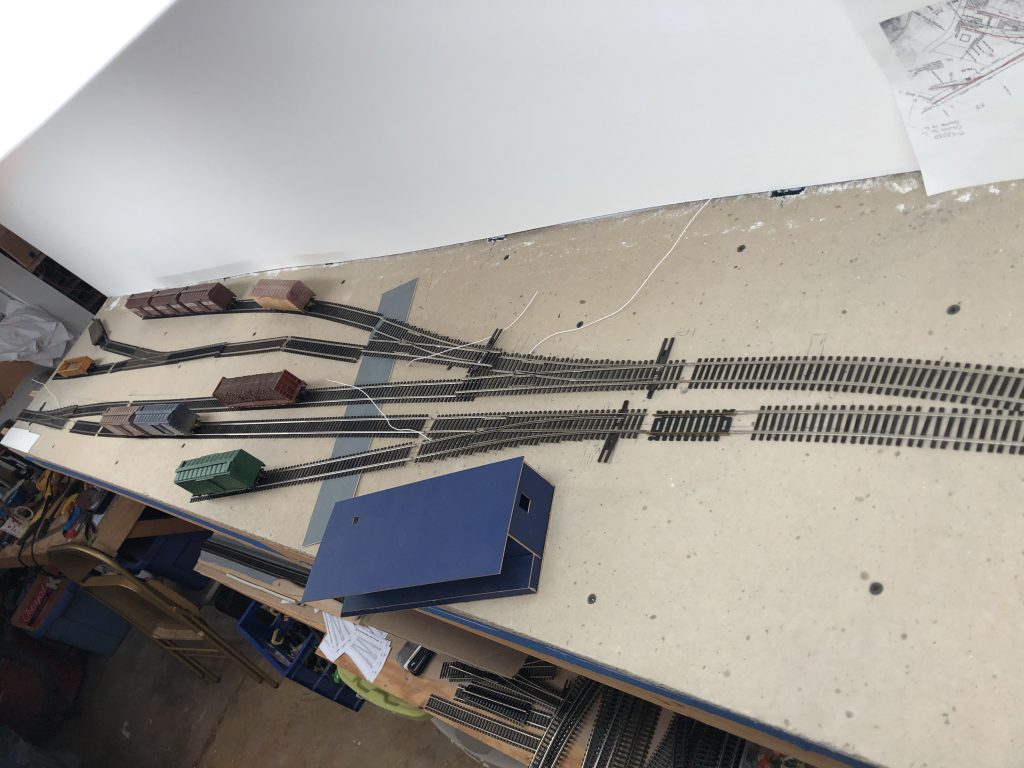

I have also been busy with various modeling tasks. A couple years ago I bought a large lot of HO scale vehicles, mostly die cast, some resin. In retrospect, I think I bit off more than I can chew and what I purchased are models that are going to take a lot of work to get where I want them for the layout. I’ve been prototype research on the vehicles in the hopes I can do some better paint jobs than the previous owner did. Here is one example:
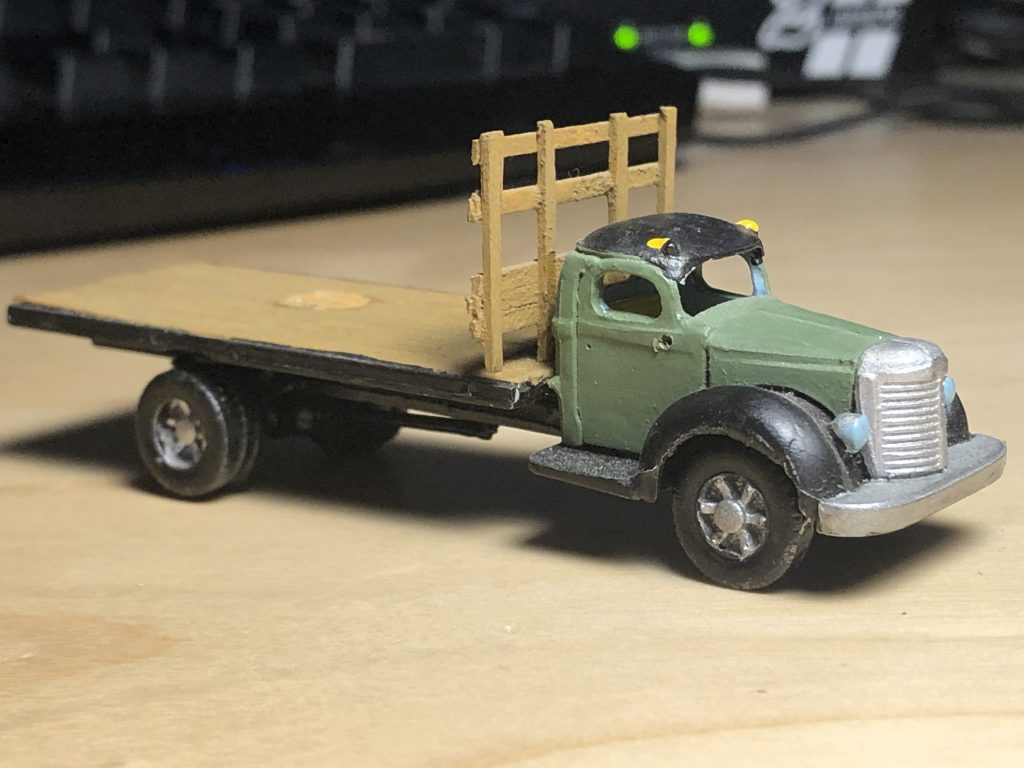
After consulting with my model RR Club, the consensus is they are Wiseman Model Services (ex Walker Motor Works) International KB-11 trucks. These models were made back in the 70s, I believe, and have gone through various iterations over the years. They are made up of several parts, are really fragile and don’t have a ton of detail. I did some research and decided to try some Super Clean for stripping these metal frames. The results were fantastic. Not only did the cleaner strip the paint, it also dissolves the glue after a few days, which allows me to get the models back into their parts form for reassembly and detailing.
For reassembly, I’ve been using the ZAP PT-36 Z-Poxy Quick-Shot 5-Minute Epoxy. This stuff is fantastic, old-school epoxy. Squirt out a bit from both tubes, mix and apply. The VERY nice thing, for this application, is that being 5-min epoxy means that it’s just enough and it gets just tacky enough to allow for me to put the truck cab parts together and rearrange them carefully as I go, until I’m satisfied, at which point it hardens. Once set, it’s rock-hard. I find that with CA, you kind of set it and forget it, with little room for adjustment as you fit things together. I ordered some BSI Insta-Set to help with getting the CA to cure quicker where I need it to.
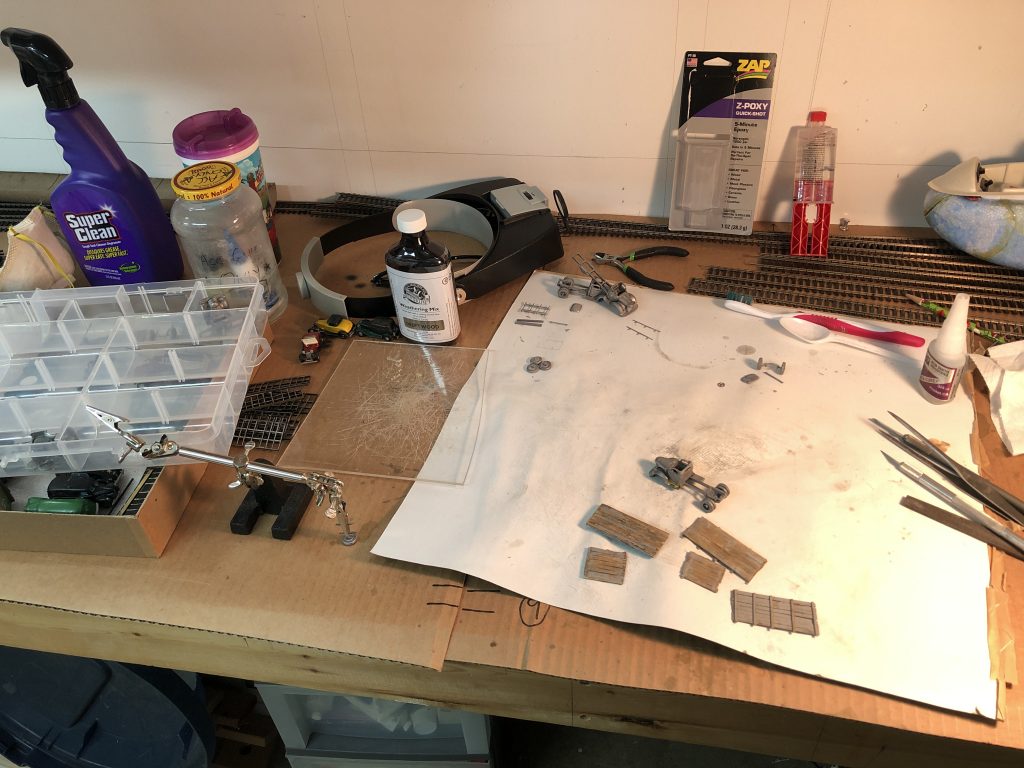
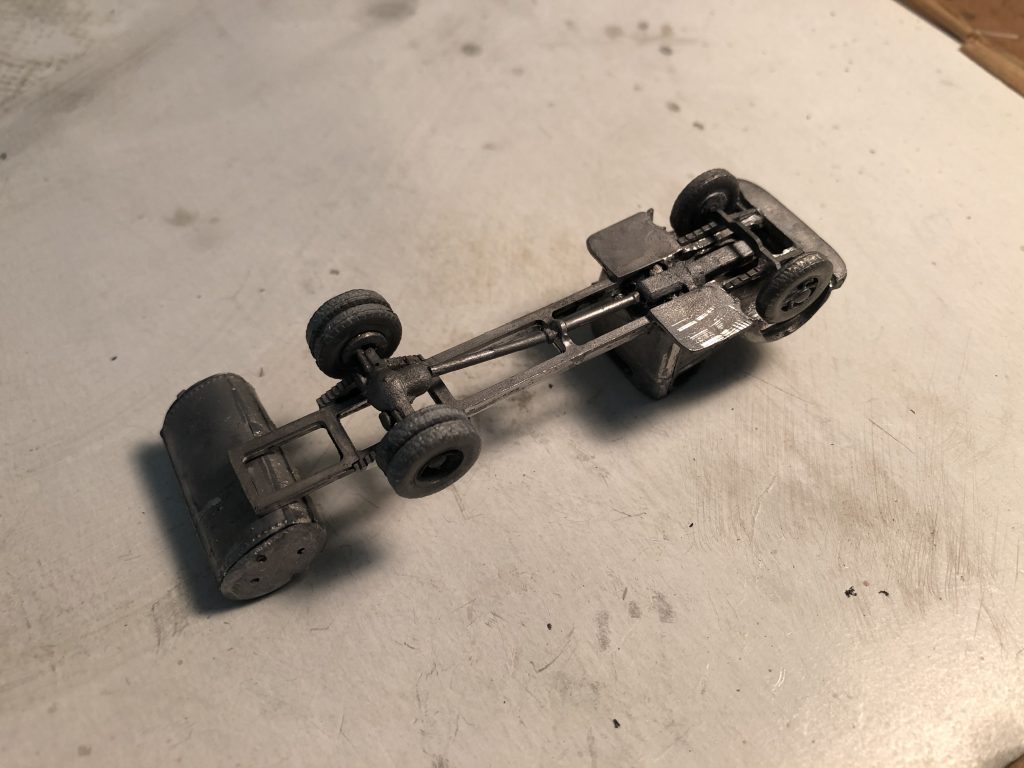
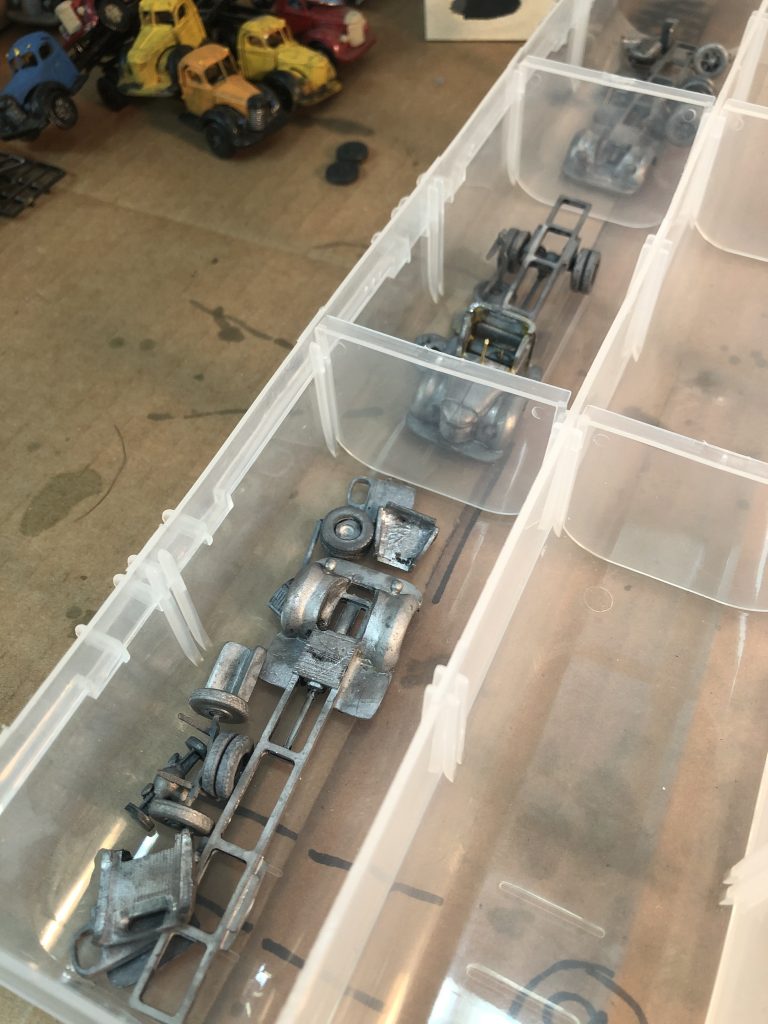
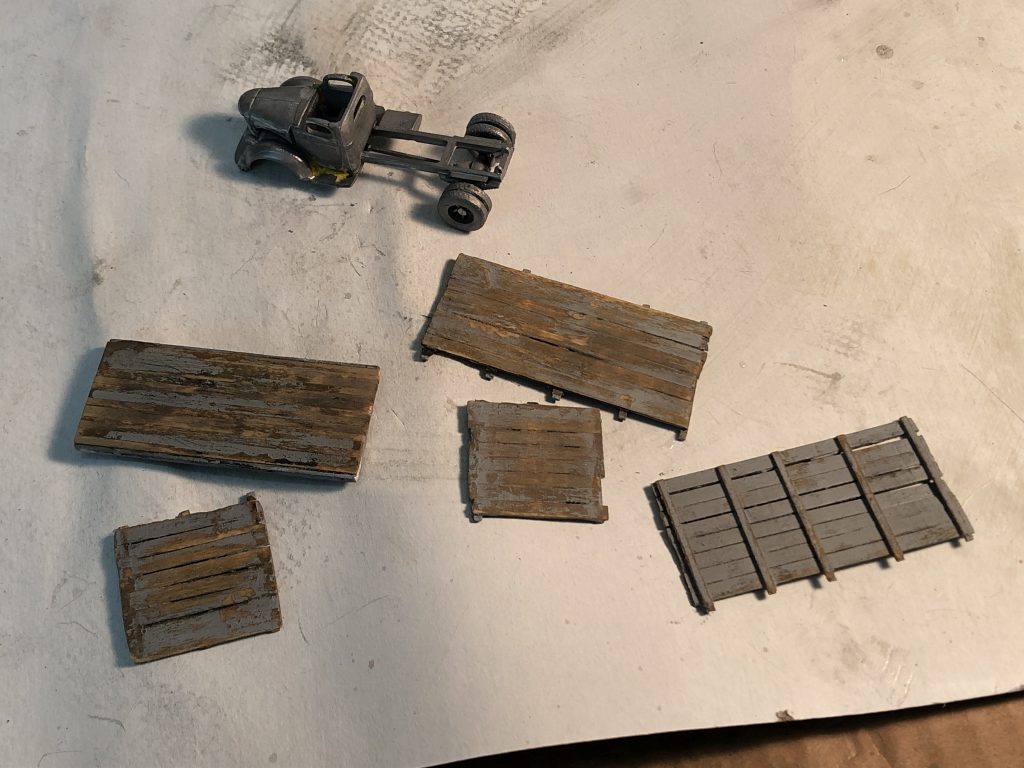
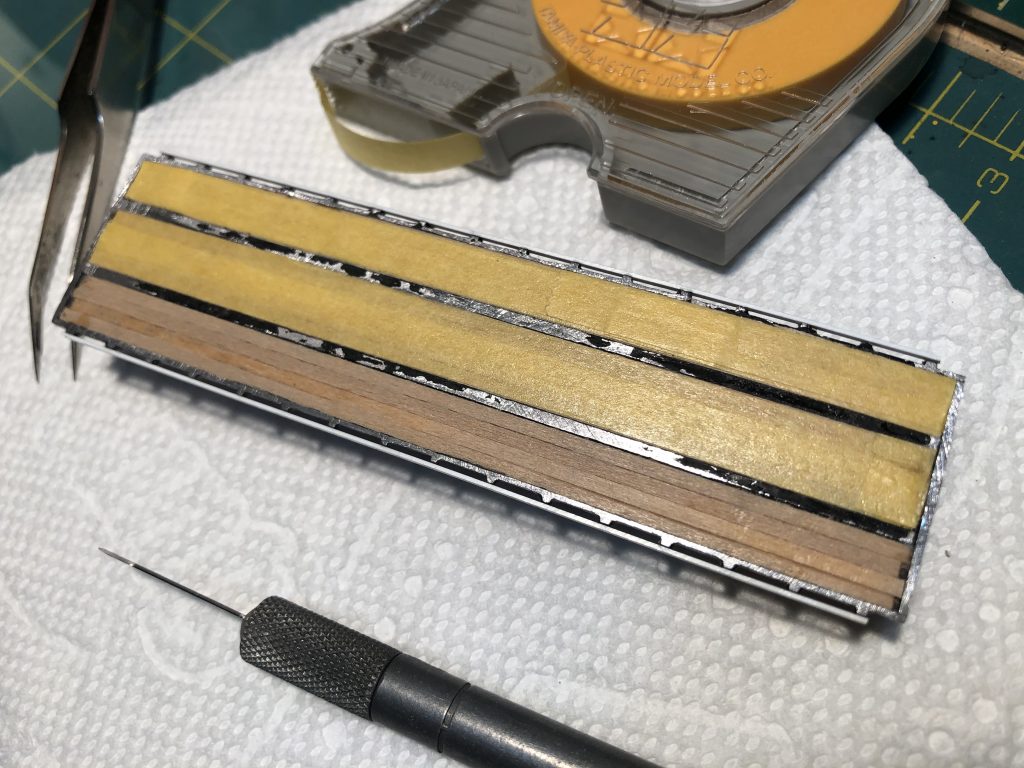
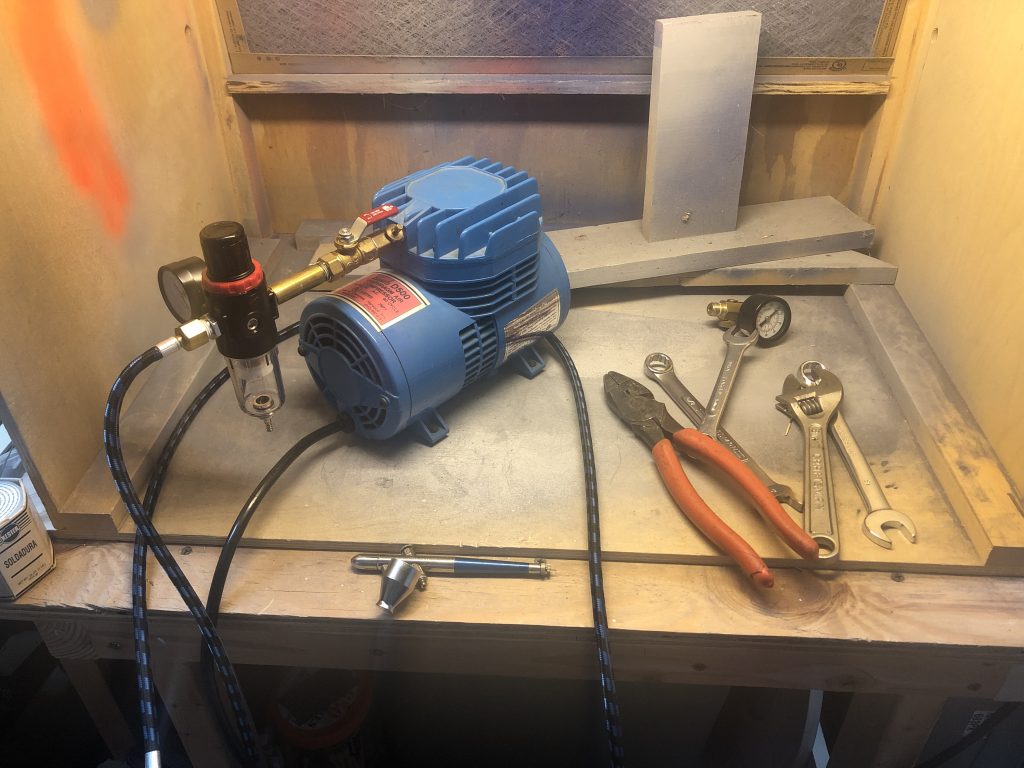
Airbrush Tune-Up – About a year ago I did an overhaul on my old Badger airbrush. I took it apart and checked all of the parts. Cleaned everything carefully and reassembled it. I decided to add a regulator to the compressor. I noticed a bit of a clunk when operating the compressor under load, so I took it apart. Inspected all of the gaskets and parts and found no issues. I reassembled it and adjusted the bleed valve. A friend from my model RR club, Greg (who you have seen here before) gave me his old air tank which I will press into service soon. I need to figure out what piping/tubing I will need. I have also been upgrading my paint supply with some proper thinners, new paint and other goodies.
Testors 1:72 Stuka Model Wrap-Up – Another interest I have is military aircraft and armor modeling. I have many unfinished projects, but this one has been floating around my workbench for about 12 years. I decided it was time to wrap it up.
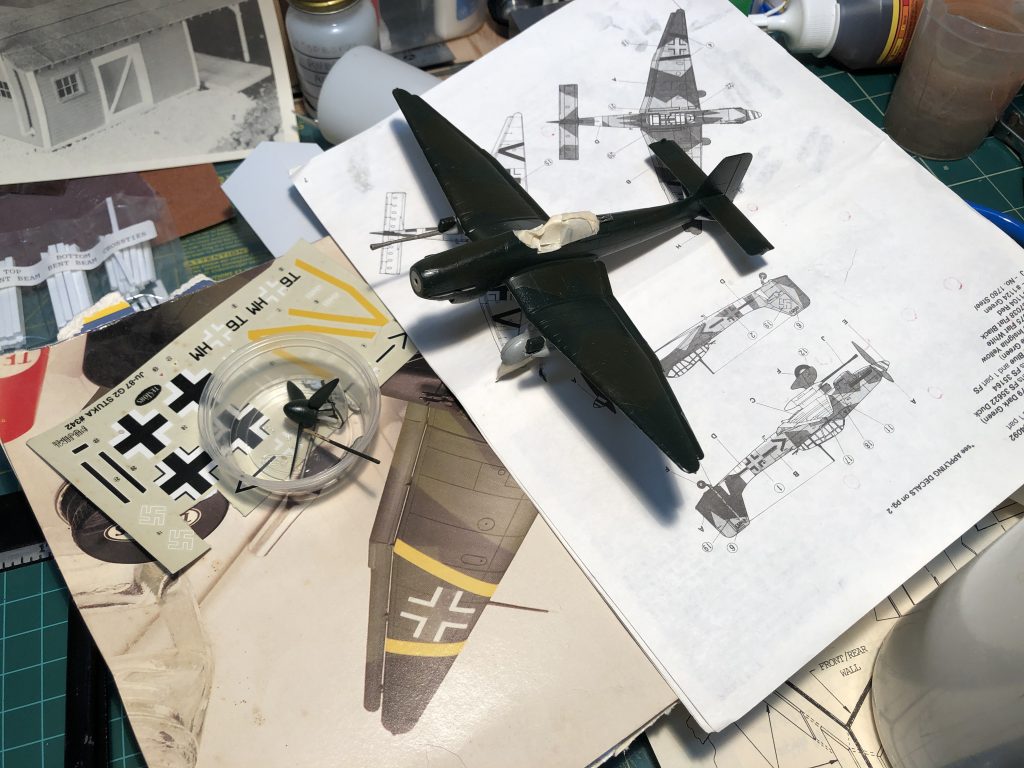
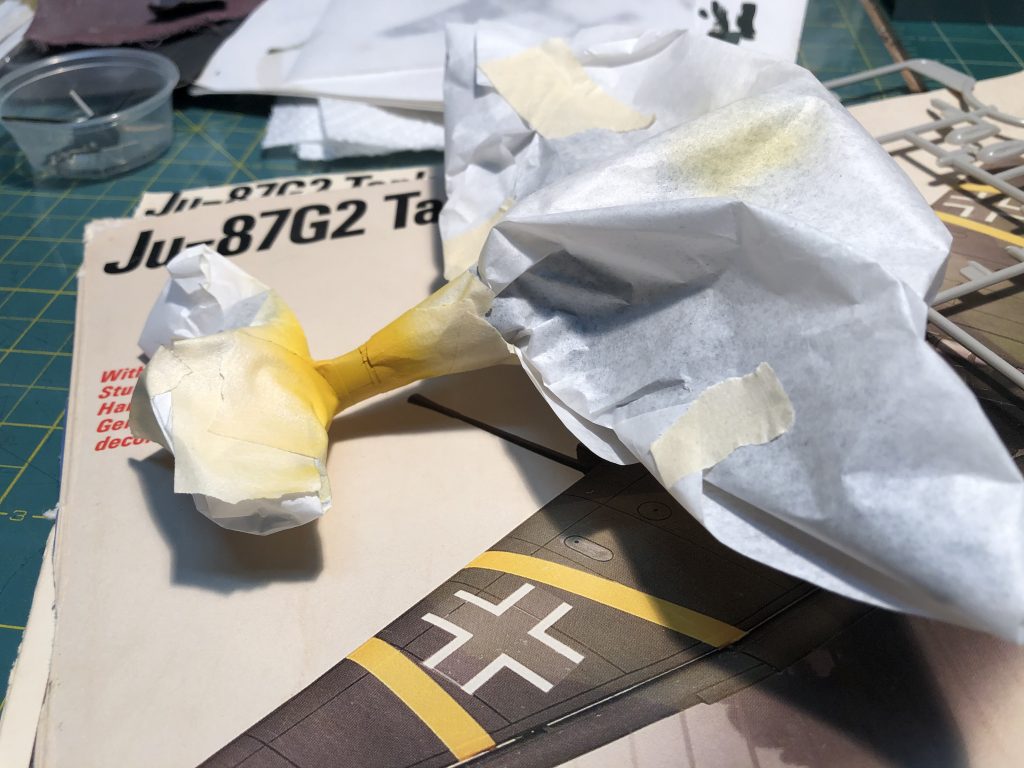
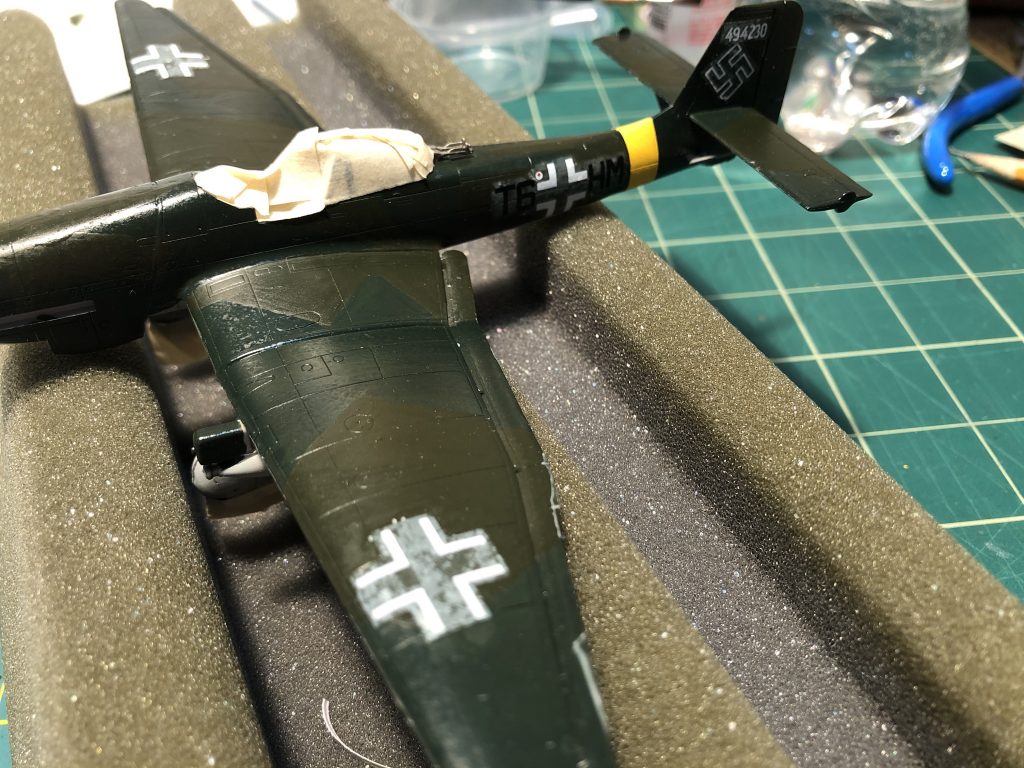
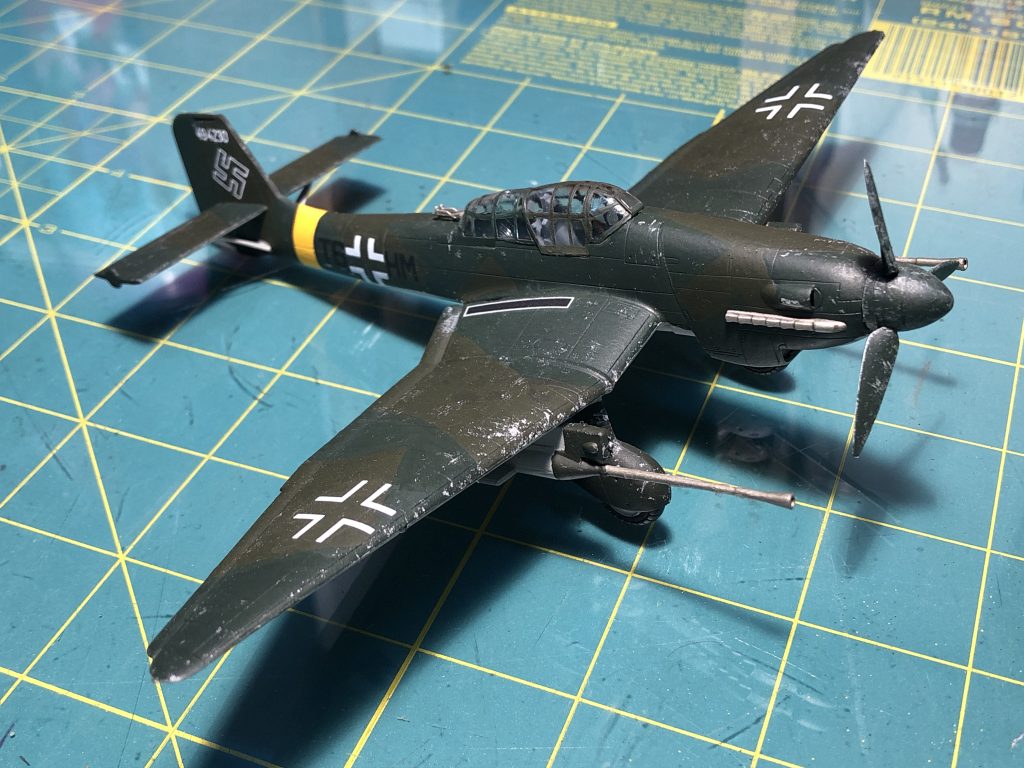
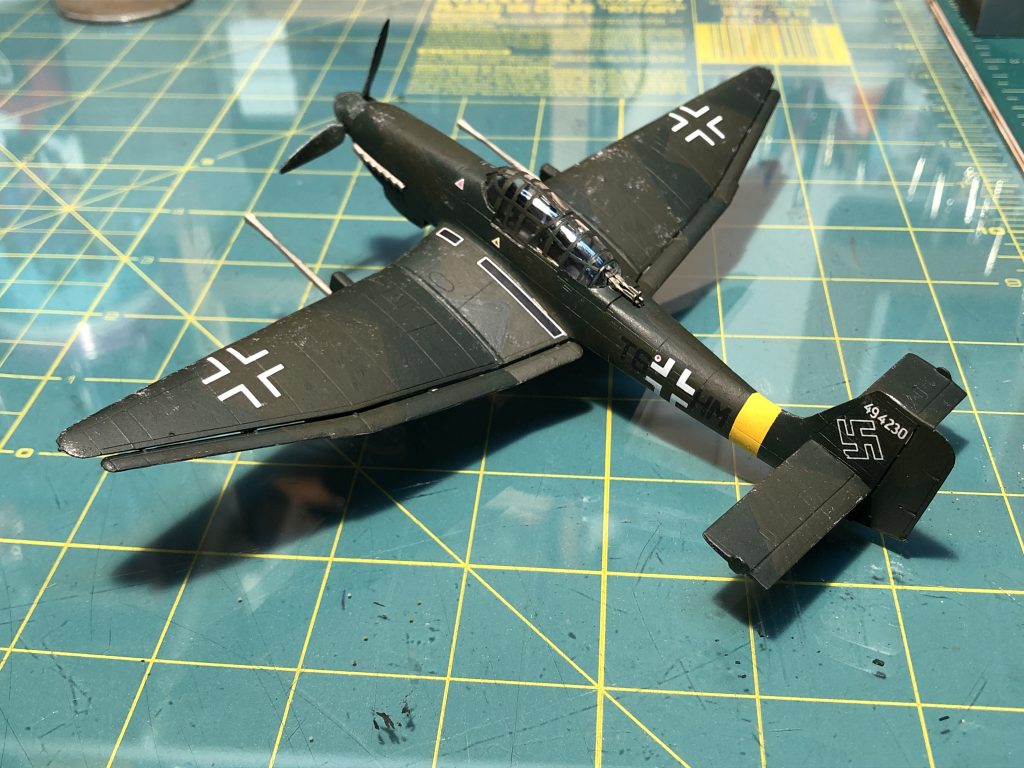
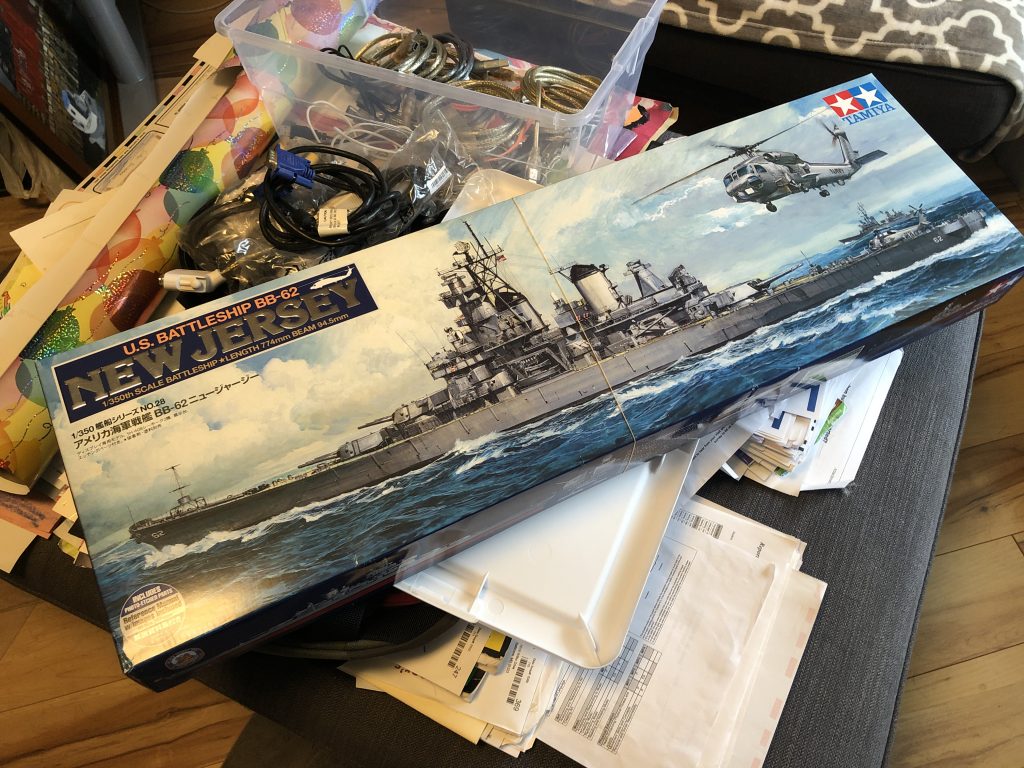
Hope you enjoyed these updates. I know it’s just a lot of rambling, but it feels great to make some progress on all these things. There are so many other items I’ve checked off lately, and really the layout room is coming back alive after being dormant for about a year. I am reinvigorated to get moving and hope to have more updates later this month. Anyone else out there getting stuff done these days? Sound off in the comments.
I figured it’s been a long time since an update on my layout & modeling progress, so here goes, in two parts. Like so many right now, I have been productive with my hobbies. I’ve chosen to spend time in the basement getting back into the layout construction and finishing up some old projects. It’s been a lot of fun, and hard work. Here’s a [long] report of what I’ve been up to:
I got the plans to place I was satisfied with and decided to start doing some work. *A quick note about this – I ended up spending another few days modifying the plans because I wasn’t pleased with them. More on this later!

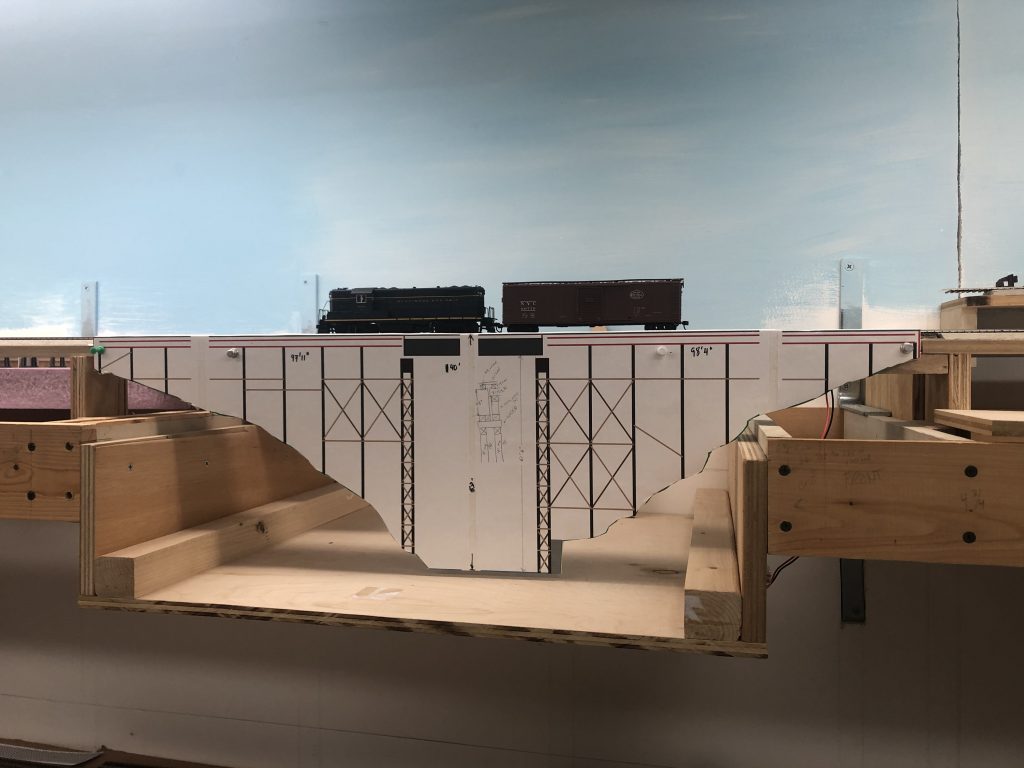
I ordered the lumber a few months back from Mt. Albert Scale Lumber (FastTracks) and Northeastern Scale Lumber and decided to laser cut some jigs for the bridge ties. I even picked up some tie plates, spikes and joint bars from the folks at Proto:87, which I will use to detail the bridge track.

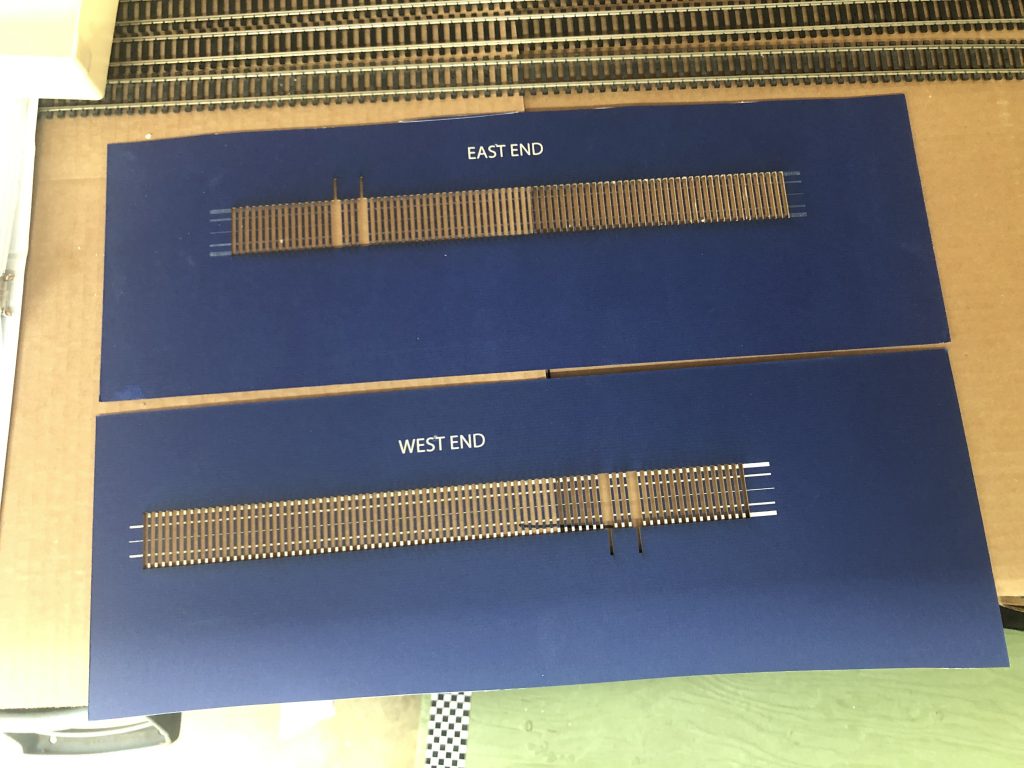

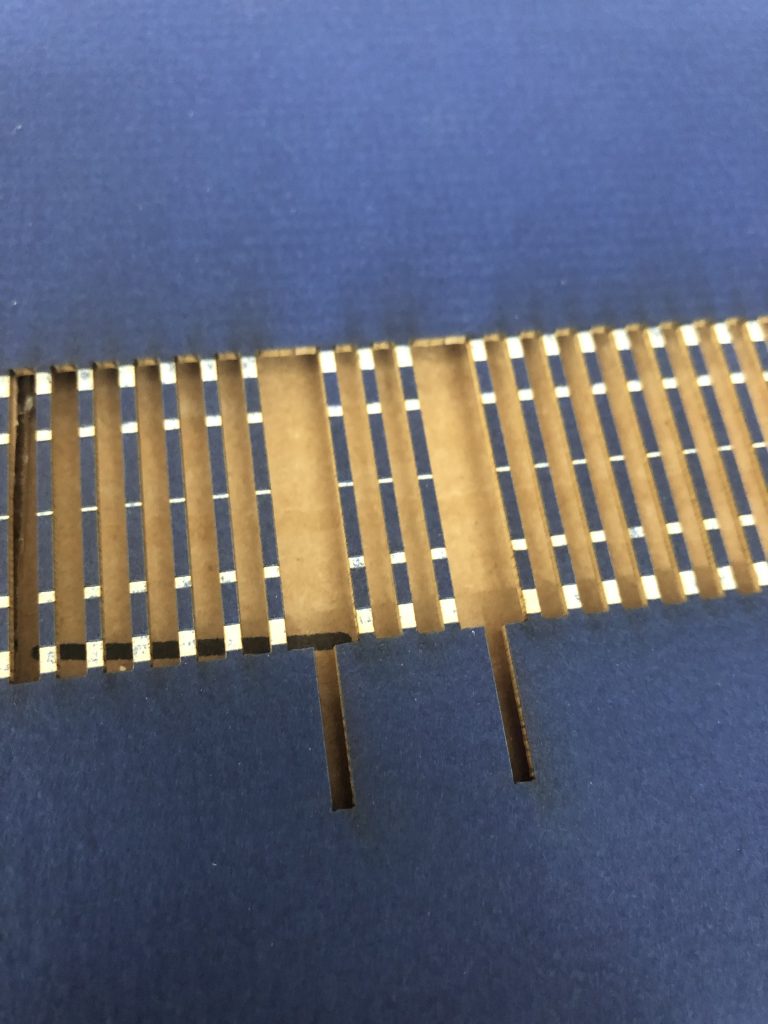
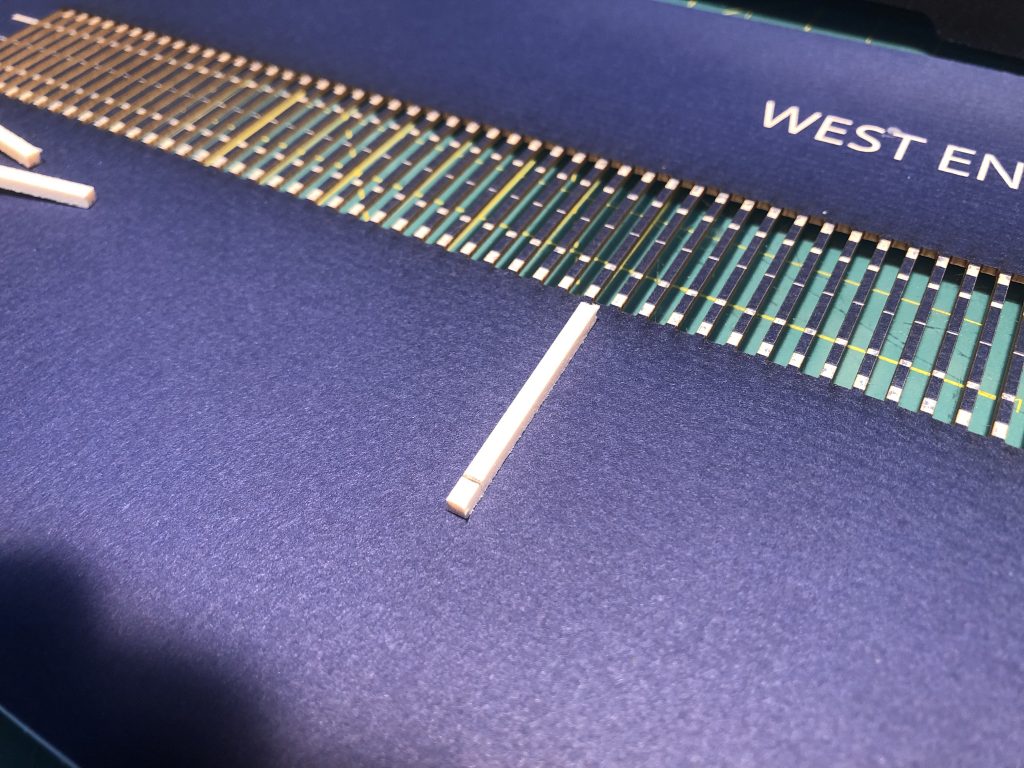
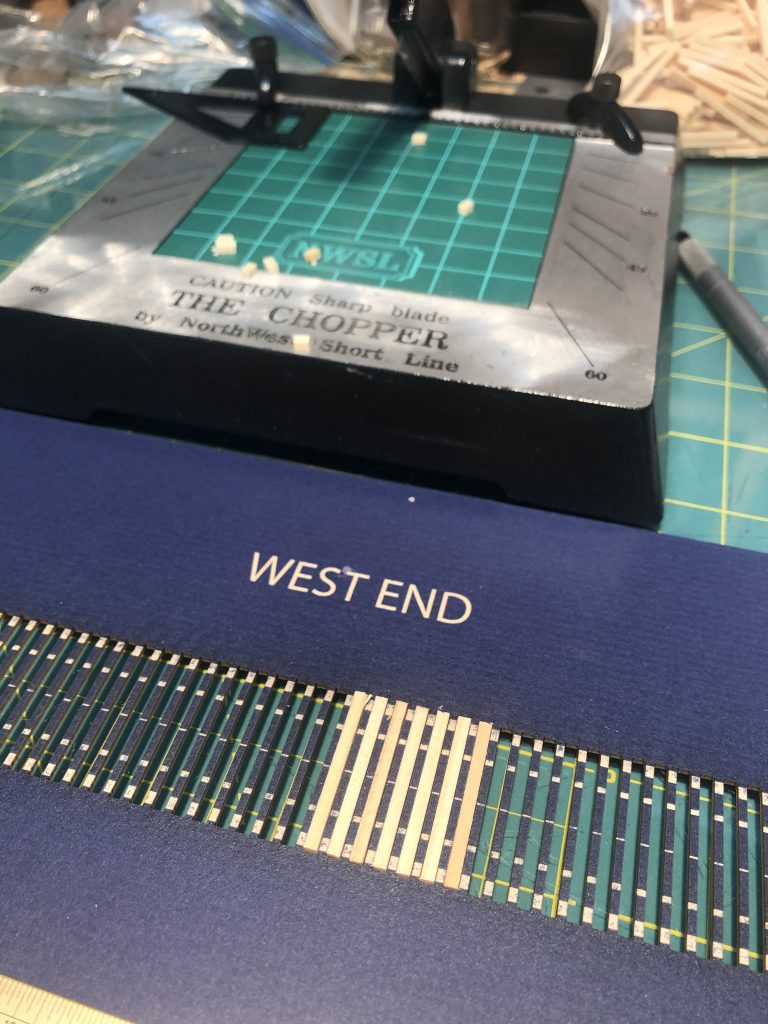
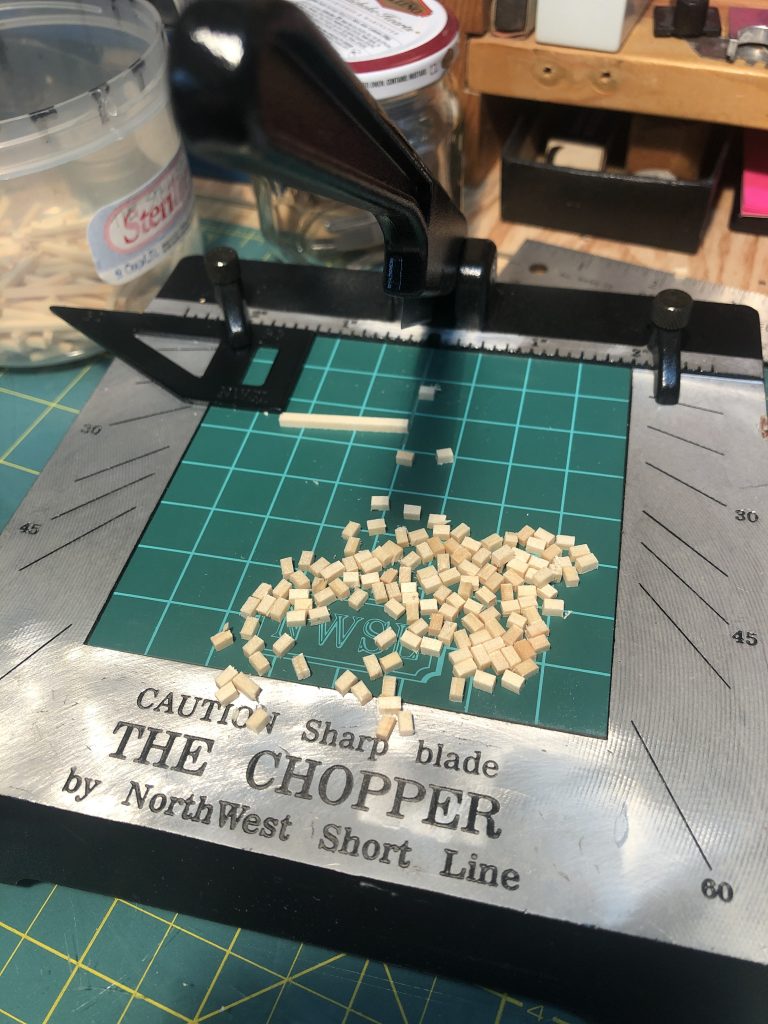
Next up was the stain. I did some testing with about 5-6 different Hunterline Weathering Mix stains and eventually settled on Tie Brown with a bit of Driftwood mixed in.
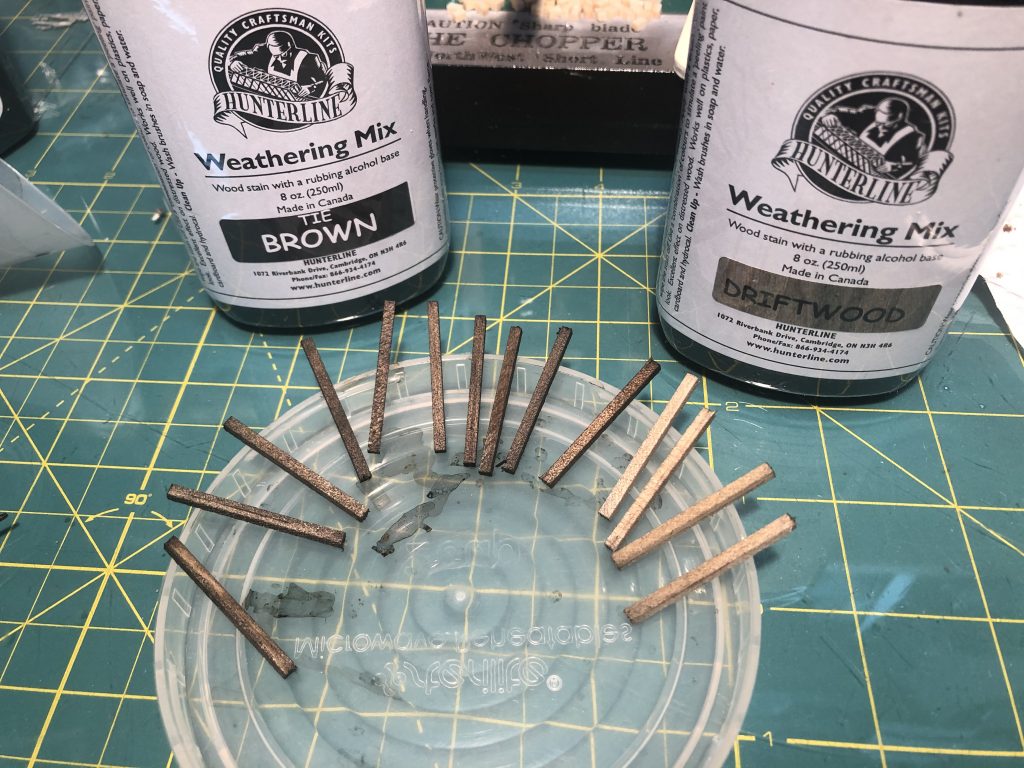
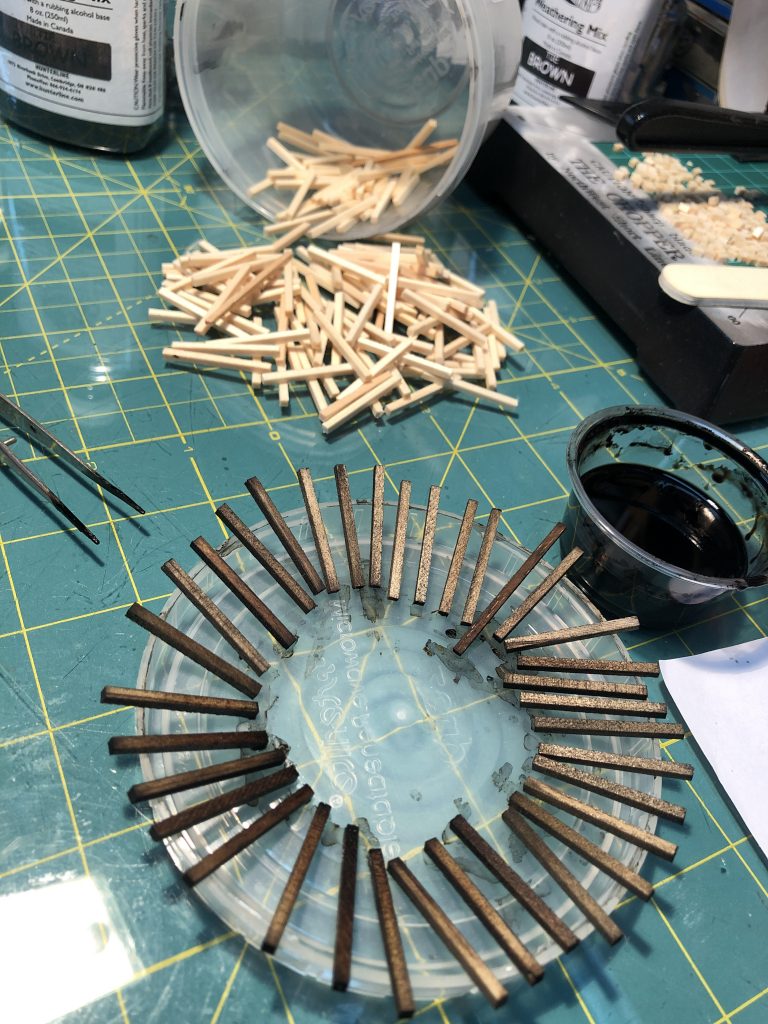
Fast forward a couple months and I’m picking back up where I left off with this project. I was doing a mental and physical inventory of the trestle project to get back on track. As I started to go through my notes and compare them with what lumber I purchased last Winter, I realized I screwed up. I missed a few things in my order. Oops! A quick trip to FastTracks’ website and the order was in.
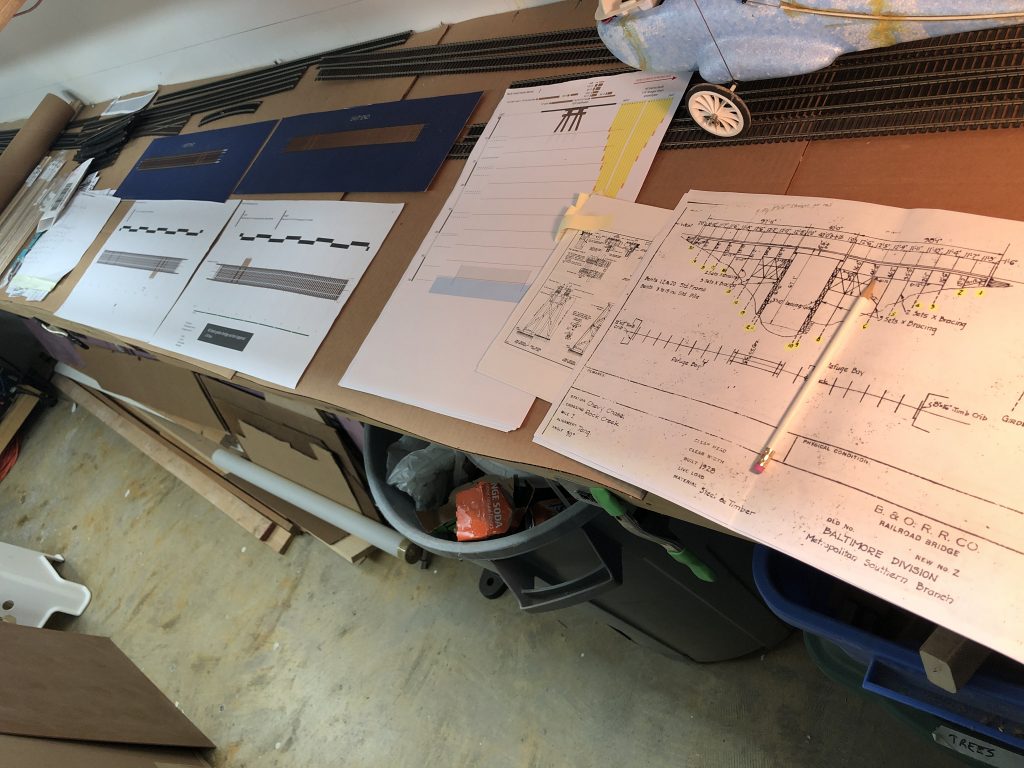
So now that I am waiting for that material to show up, let’s get busy staining the wood we DO have! But how do you stain 2′ long x 1/8″ pieces of wood? I had to figure out a solution, so I designed a trough out of foil, but that failed catastrophically. (Cleaning up stain is NO FUN.) I cut a rigid paper tube in half, lined it with foil and used some old clay to create ends that are adjustable. I then laid a sheet of plastic wrap in and held it in place with clay blobs. The whole thing was rubber-banded to a piece of wood to keep it steady. This gave me a nice place to hold the stain while I dipped wood in and set to dry on drying racks I made from old Snap-Track. In the future, I may try to get some Flex Seal to spray on the tin foil and make it a bit more robust, as I worried the tweezers or the wood itself could poke a hole in the saran wrap and cause a leak.
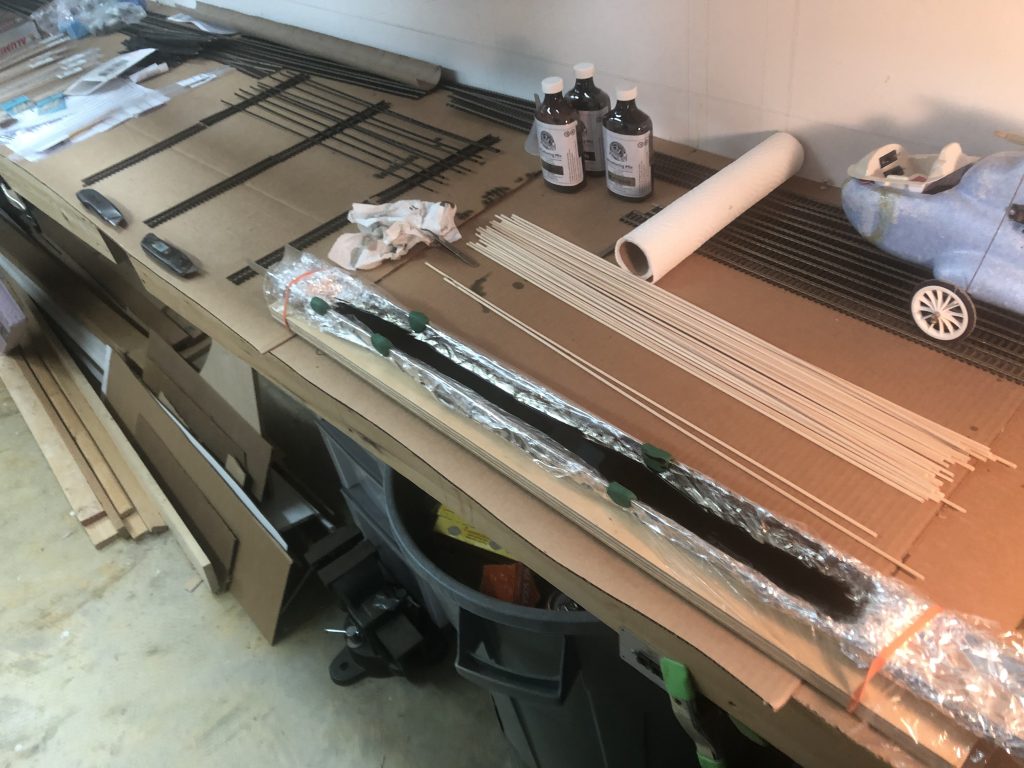
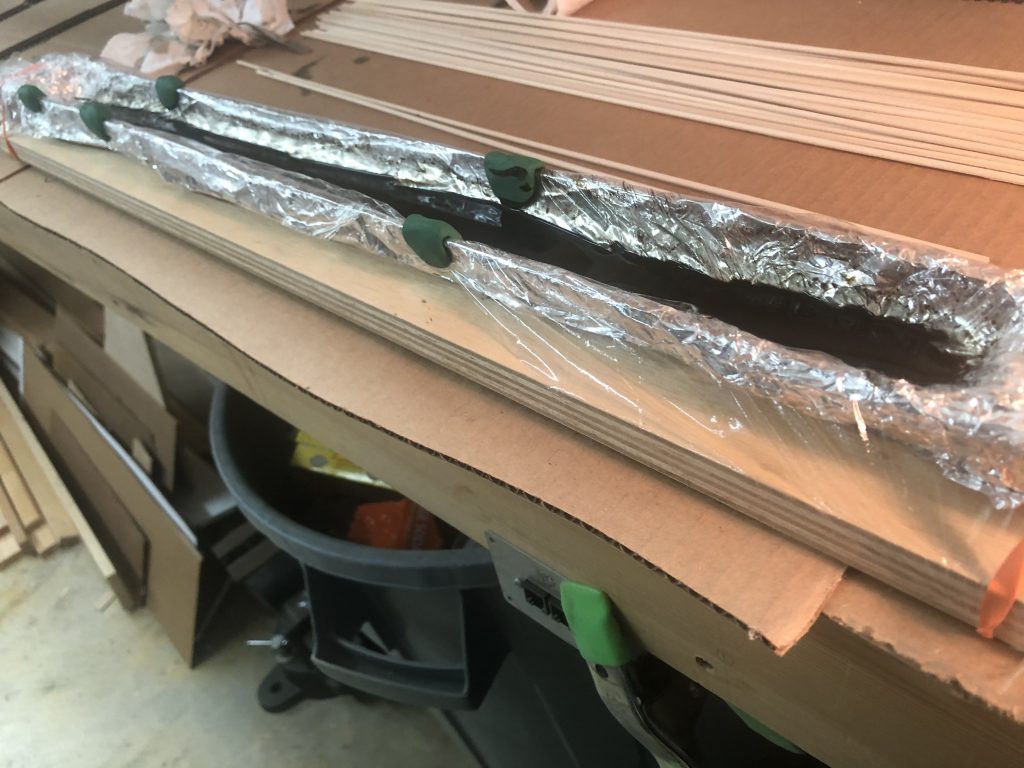

Tichy makes a 40′ plate girder bridge flatcar kit load, that is a very close approximation of the same sort of bridge span across Rock Creek. The major difference is that this one is 1’6″ taller than the B&O prototype.
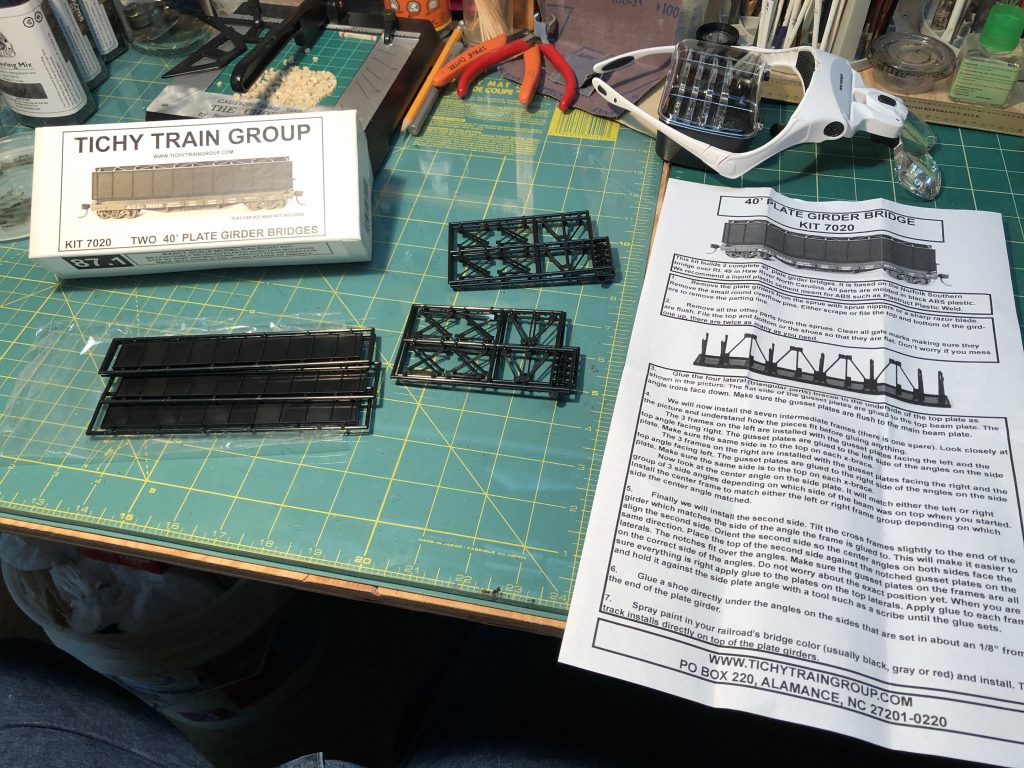


Story time. I spent a good while putting this post together, and when I got to this point, I stopped and realized there was a problem. I sat looking at the open deck girder bridge model and realized it looked a bit tall to me. I quickly opened up my drawings and reference materials and looked a the B&O plans. They clearly indicate that the trestle is to be 40′ long, 6′ 6″ wide (girder to girder) and 4′ 6″ high. This Tichy kit is 6′ tall. I then went down the rabbit hole for several hours while I tried to figure out what to do.
I opened up the plans I had drawn and started to modify the sections where this 6′ tall center span would sit. I had to lower the bents and adjust all the cross bracing in those areas. I did not like it. Some of it looked a bit odd and threw the whole thing off. I was not happy. I decided to keep digging.
Months ago, when searching for a deck girder bridge for my model, I had a very hard time finding a nice 40′ long kit in HO scale. The Tichy kit really fit the bill, but I didn’t pay close attention to the height of the girders. Micro Engineering makes a 30′, and a 50′ bridge, but not a 40′ one. The 50′ bridge is just over 6 scale feet tall. Just like the 40′ Tichy model I already have. The 30′ bridge, albeit too short, is a scale 4′ tall. I have decided that this will be my way forward. I feel that a scale 6″ is easier to forgive and blend versus a scale 1’6″ which is quite a bit more and really changes the characteristics of an iconic part of the structure. Now, some will say “there are only a small handful of people in the world who will know the difference. Who cares!?” Well, being that I’m making this model for me, and I care, I am going to spend the time to do the best job I can. I’m already knee deep!
So I then set out to RE-adjust the plans for the trestle, now with this 4′ high girder. I will have to kitbash two kits into a 40′ span, but that shouldn’t be too difficult. I’m going to add slightly taller blocks under the bridge to add to the height just a couple more inches, to hide the disparity between the prototype and my model. In the end, we’re talking a few inches difference. As I went through the plans, I realized some other errors I had made, and I cleaned them all up. I also reformatted the plans to fit on 8.5×11 paper, so I can print at home, since I think I will be in it for the long haul. I will share my progress on the plans soon in a future post.
So, phew! This was a doozy. In a long period of time, not a lot has happened, but such is my life. I have been busy with other projects… *ahem*
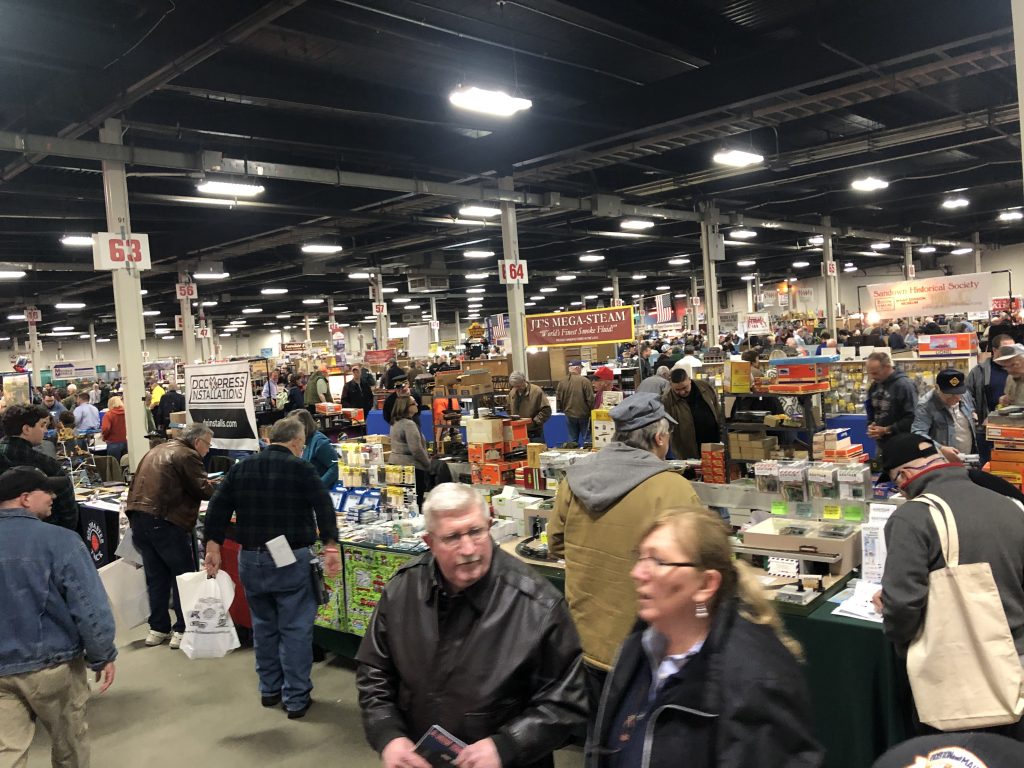
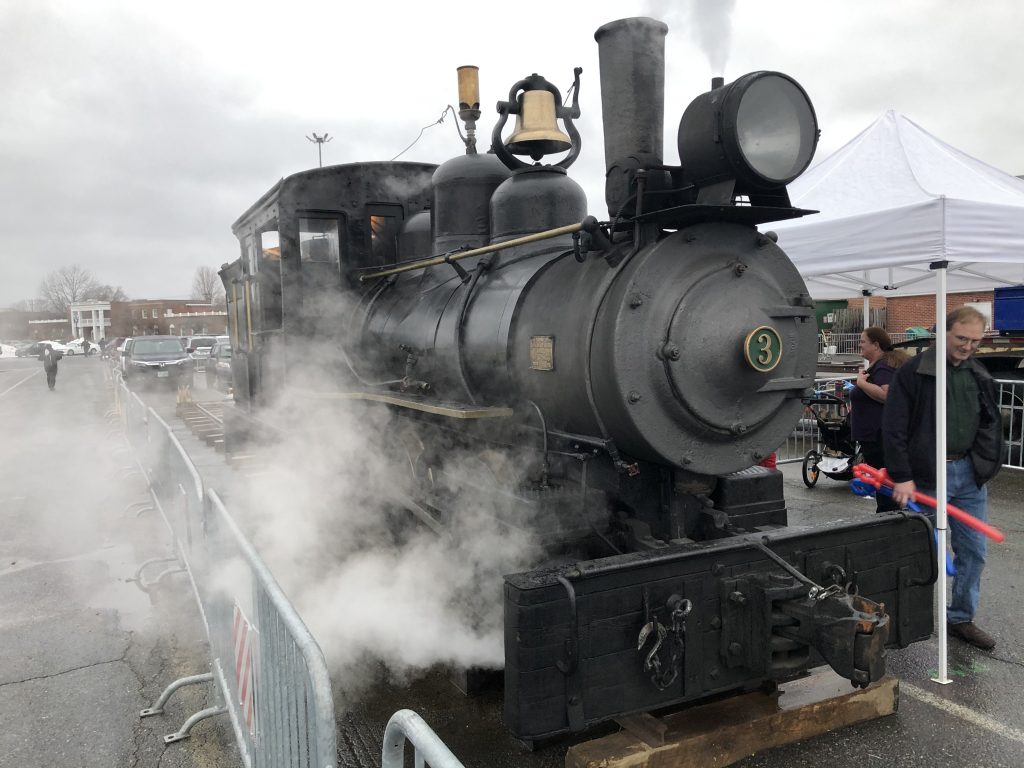
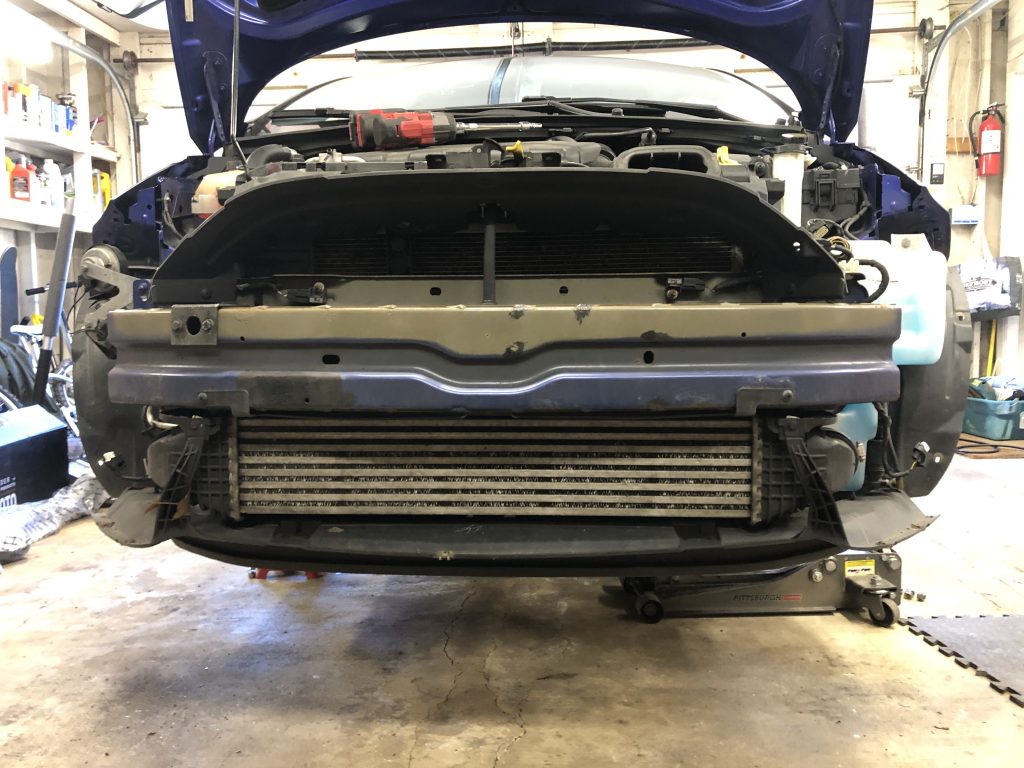
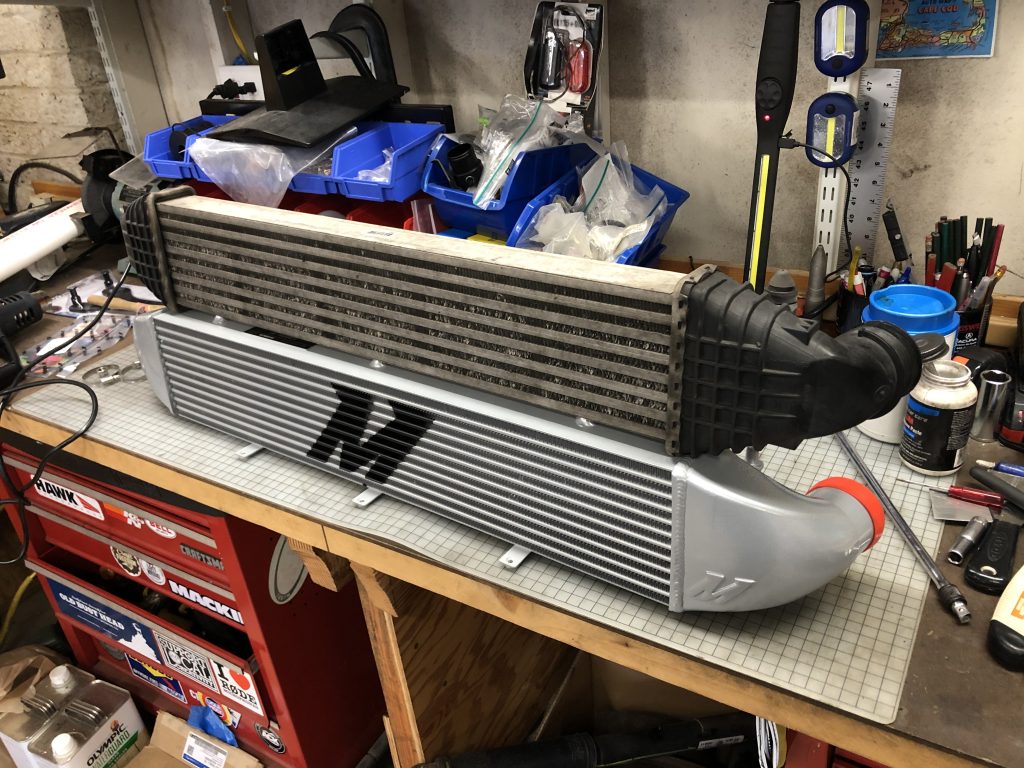
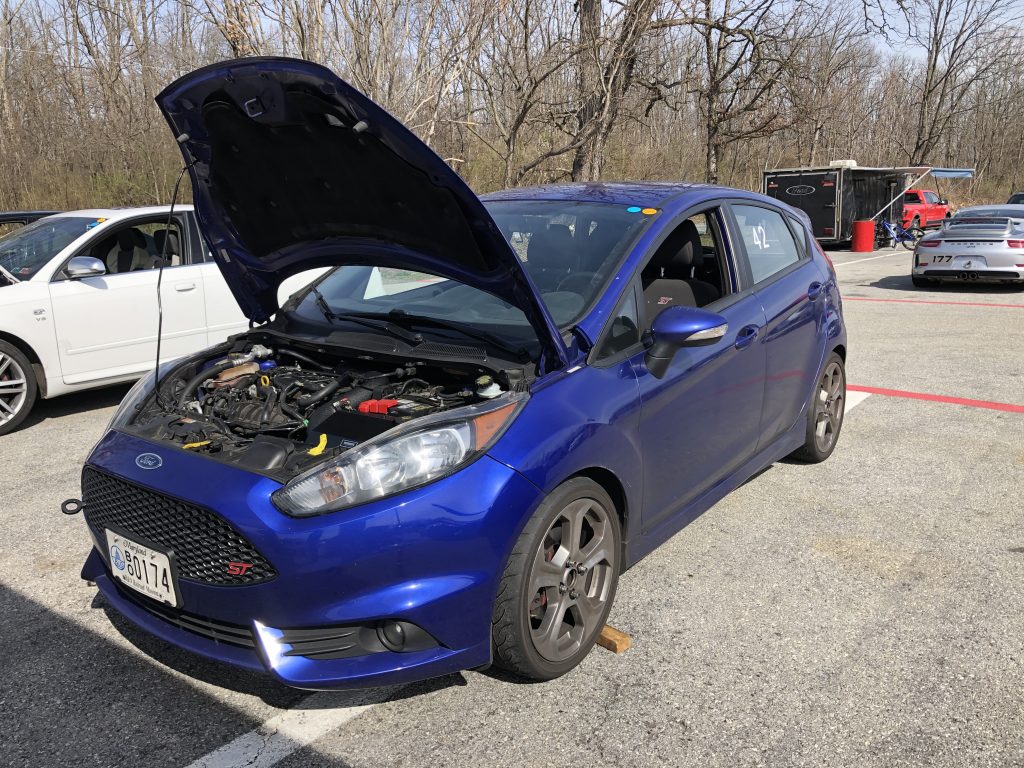

So, yeah. Been a lot going on. Second update coming SOON!
Back in 2002 my then-fiancee, now wife, and I went for an adventure to explore and film remnants of the GB between Georgetown Junction and Rock Creek. We managed to capture several scenes along the way, much of which is atmospheric in nature. I was just starting to get interested in the history of the Branch and figured doing a short documentary for my video editing class would be a perfect way to dig in. Unfortunately the documentary was never completed, but I am thankful that I have this footage from eighteen years ago to reflect on how the right of way has changed and what was there. This is very much uncut footage and is presented as such. Enjoy!